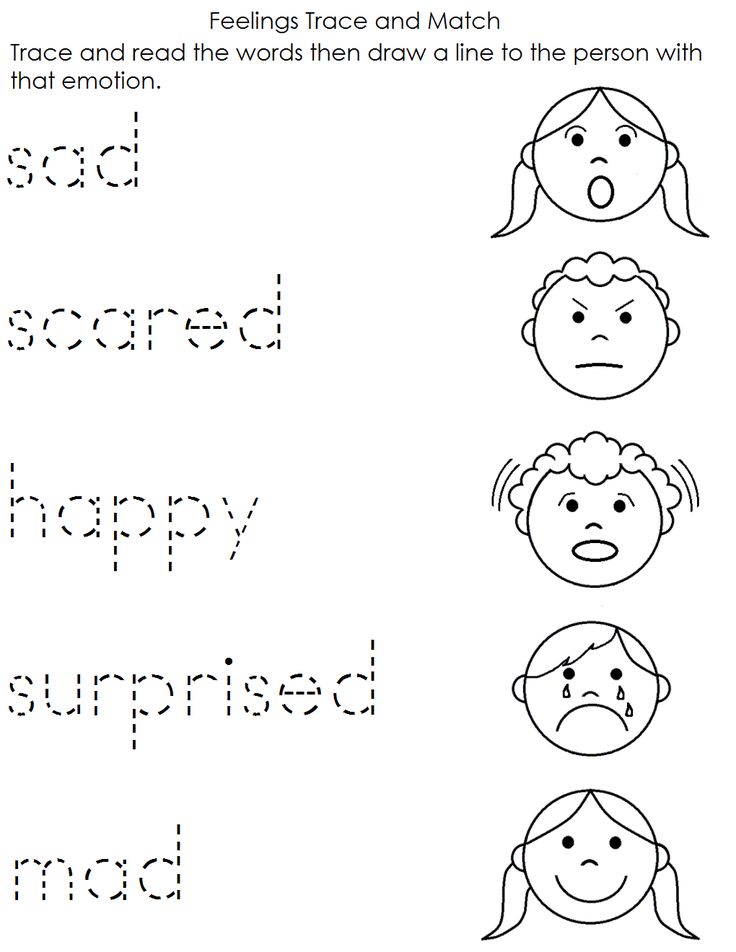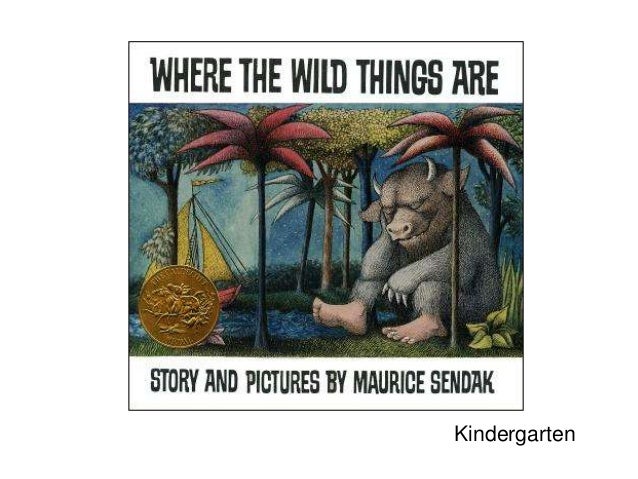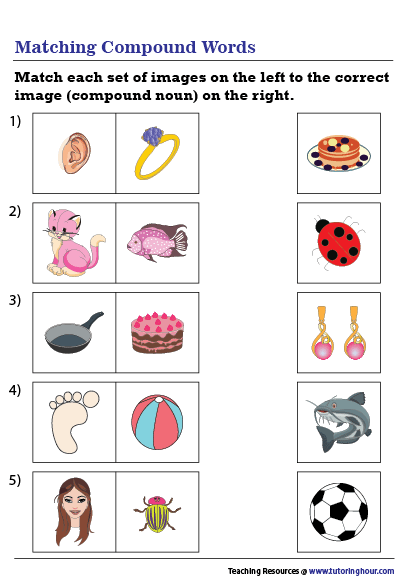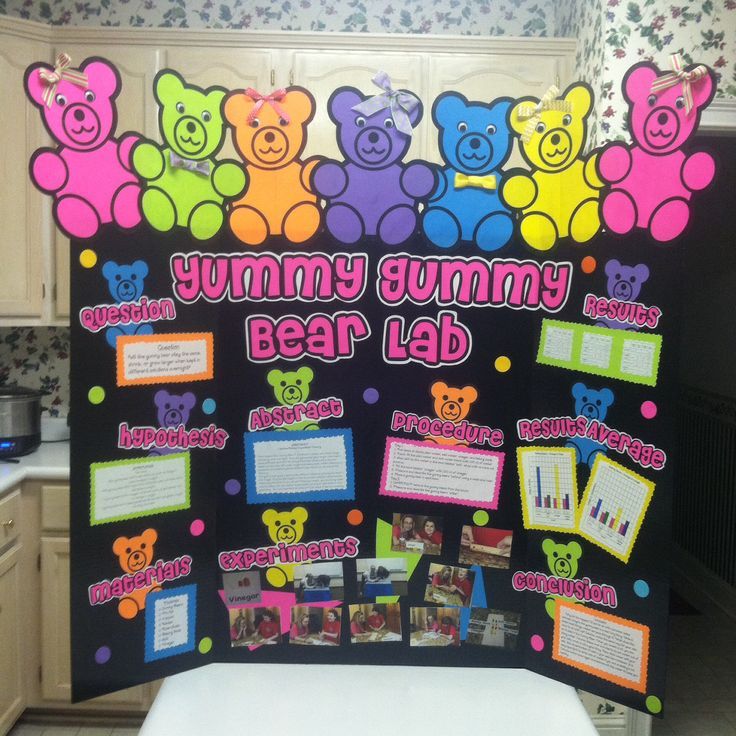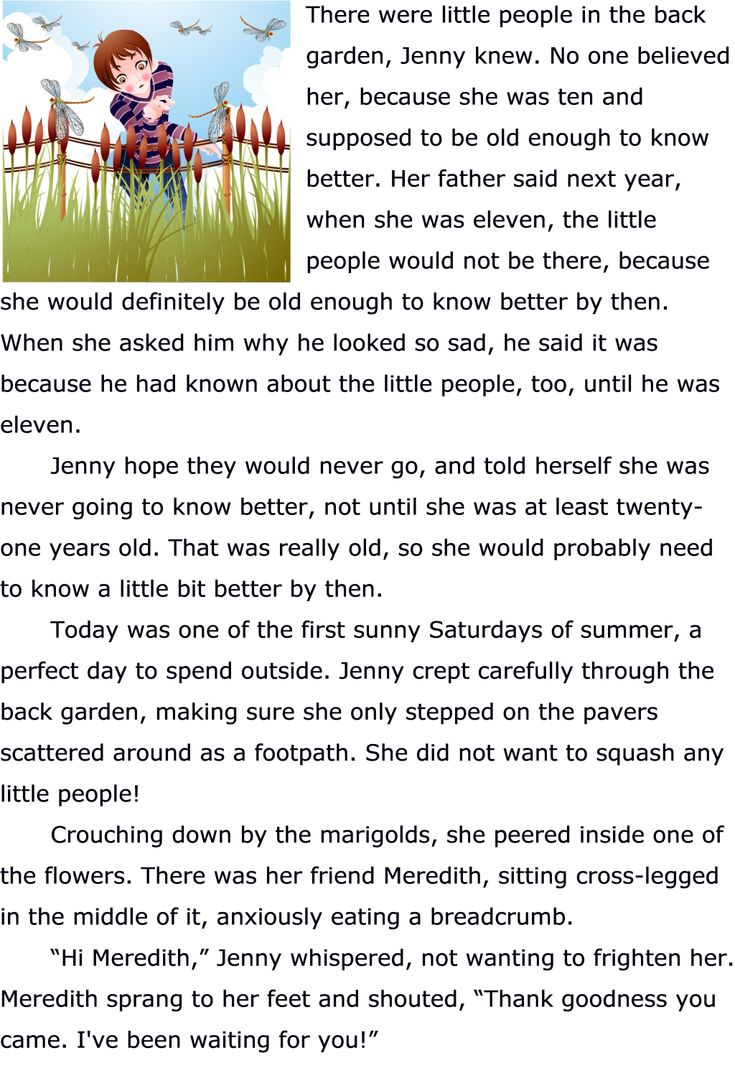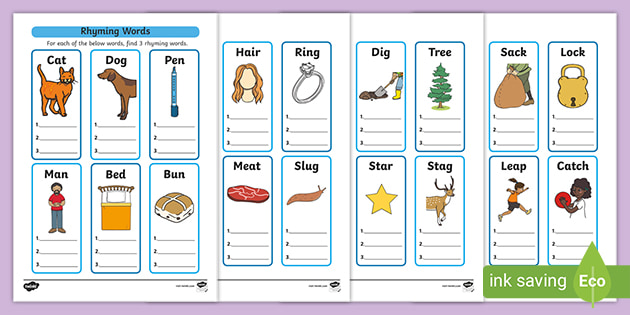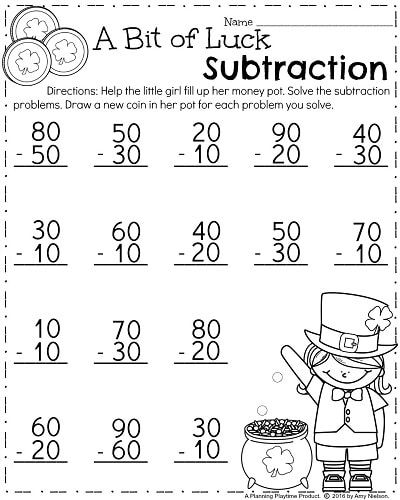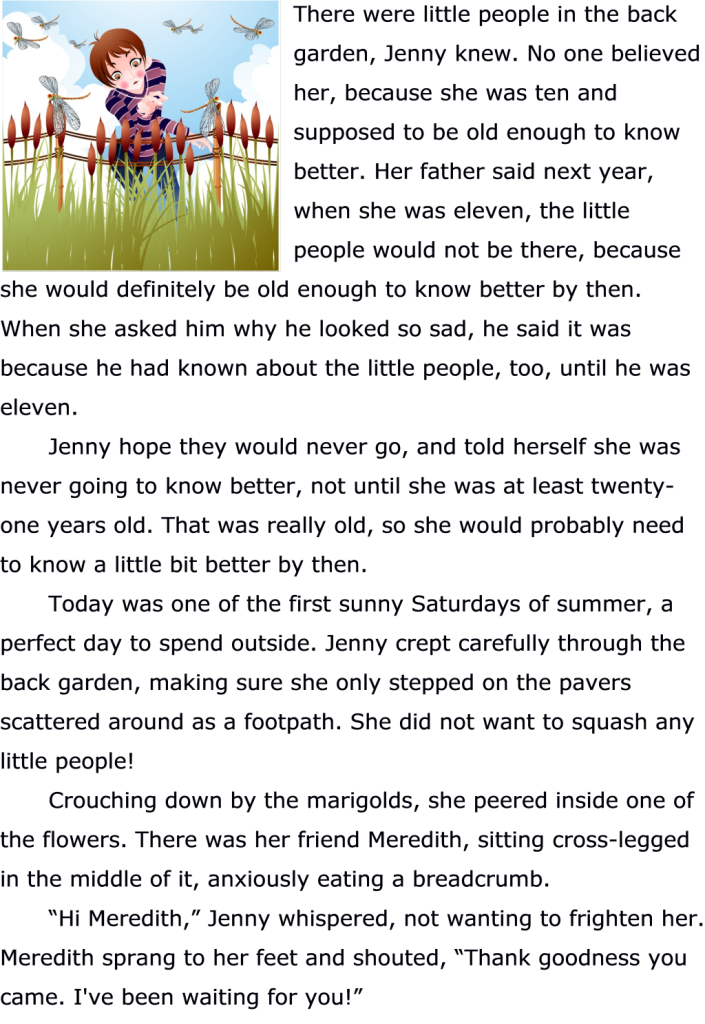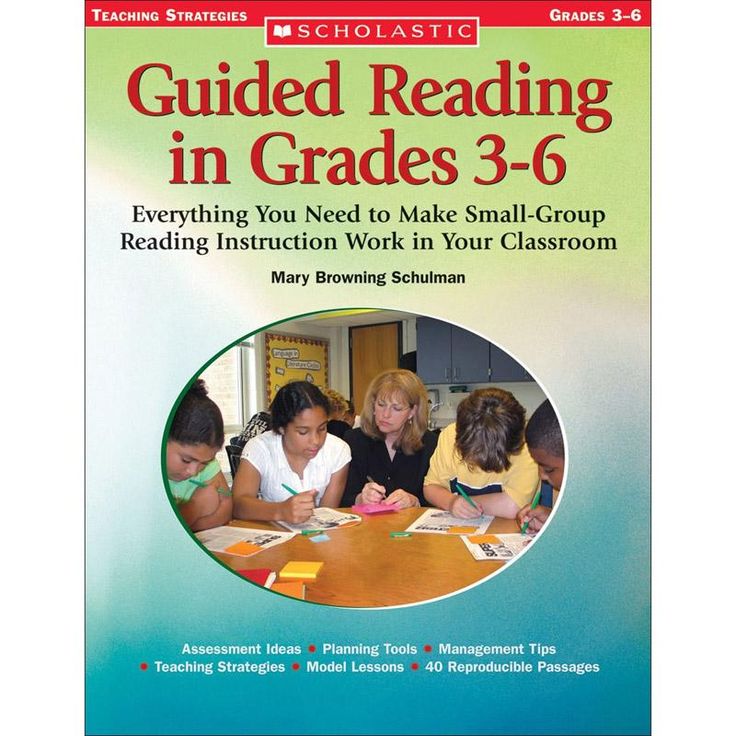Sentence making for kids
How To Make The Most Of Simple Sentences For Kids
When a child finally learns how to construct their own simple sentences, for kids (and parents!), it’s a really special moment.
Word combinations such as “knee sore” turn into, “Mommy, my knee is sore.” Or “now juice” develops into, “Can I have some juice?”
There’s no denying the importance of sentences — they help us better express our thoughts and feelings. So the only question now is: How can you help your child start constructing their own sentences so that they, too, can communicate better?
Two words: simple sentences.
When Do Kids Start Forming Sentences?
Children start forming sentences once they know a few words. But language development is quite a journey!
Somewhere between 18 and 24 months, a toddler will begin constructing two-word “sentences,” like “want milk” or “no sleep.” At this stage, they are linking two or more words together to express an idea. This is the first step and a big milestone.
By four years old (sometimes earlier), most children are speaking in complete sentences. But that doesn’t mean they’ve reached the end of their sentence journey.
While your child may be speaking in complete sentences, finding playful ways to expose four and five year olds to sophisticated aspects of sentences while being kid appropriate is beneficial. This will help them continue developing their language skills.
One of the best ways to do so is to encourage children to speak in complex sentences to express their ideas. How? This can be achieved by simply resisting the temptation to simplify our own speech.
Remember that children are learning sponges! They will naturally pick up on the language habits you expose them to. So, continue speaking in complex sentences while in their presence. It’s not a bad thing if your child asks, “What does that mean?”
Of course, simple sentences come first.
What Makes A Simple Sentence?
A simple sentence is the most basic form of a sentence.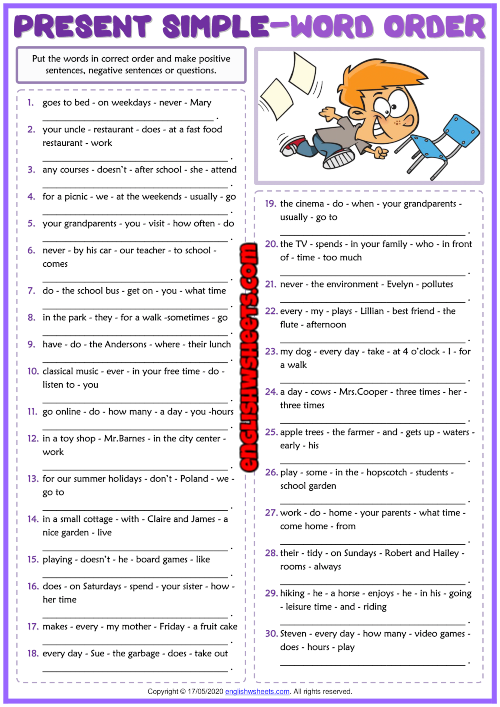 It contains only one independent clause — a group of words that forms a complete thought and is made up of a subject and predicate (which includes a verb and expresses what is said about the subject).
It contains only one independent clause — a group of words that forms a complete thought and is made up of a subject and predicate (which includes a verb and expresses what is said about the subject).
For example, in the simple sentence, Thomas kicks the ball, “Thomas” is the simple subject and “kicks the ball” is the predicate, with “kicks” being the verb, or simple predicate.
Simple sentences for kids are mostly short, but they can also be long. The length of the sentence isn’t the focus. What’s important is that the basic elements (subject and predicate) are always present.
When we communicate in our everyday lives, there’s usually a good mixture of both simple and more complex sentences without us even thinking about it. In order to help our kids reach this effortless communication stage, we need to help them understand the basics.
The good thing about the English language (and every other language, actually!) is that once you understand the basics, moving on to complicated structures is easier.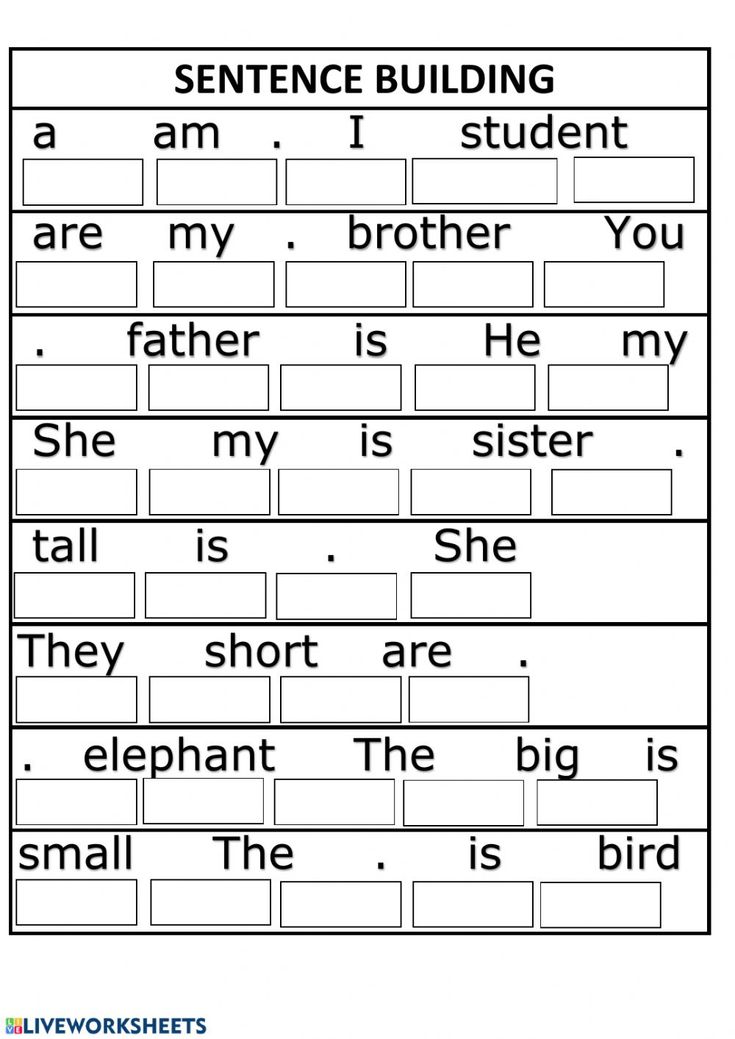
Simple Sentences For Kids To Act Out
One of the best ways for children to learn is through acting things out. If you have an active young child who enjoys moving around, why not use their energy to encourage some learning?
Here are some simple sentences for kids they will have fun acting out.
- He reads a book.
- The dog barks.
- The cat sits on the mat.
- I hop on one foot.
- The pig gobbles his food.
- The rooster crows.
With these sentences for kids, your child will have a blast while naturally learning what makes up a sentence!
Other Ways To Practice Sentences For Kids
1) Use Pictures
We recommend having your child use pictures to make up stories. You can even record the stories and listen to them for a little added fun!
If your child wants to write their ideas, too, that’s great! But don’t worry about standard spelling; much more important is the creative effort involved in thinking of a great story composed of interesting sentences of their own creation.
You can use pictures of animals, nature, sports, or even family photos. Then encourage your child to share whatever comes to their mind after having a look at these images.
During the first session, your child may need a few verbal prompts to help them get started. Simple questions like, “What’s happening in the picture?” or “What does this image remind you of?” can help to get their creativity flowing.
If you have multiple children, you can allow them to share what they came up with about the same image. As individuals, they will most likely think of different sentences, so this is a great opportunity to emphasize how everyone has unique ideas.
We encourage you to allow your children creative freedom here. The idea is to place an image in front of them and let them create anything they feel like creating.
2) Play Sentence Games
If you’ve been following our blog for a while, you’ll know one thing for sure — the HOMER team loves a good game! Games are not only fun, but they’re also great ways to help children remember fundamental learning concepts.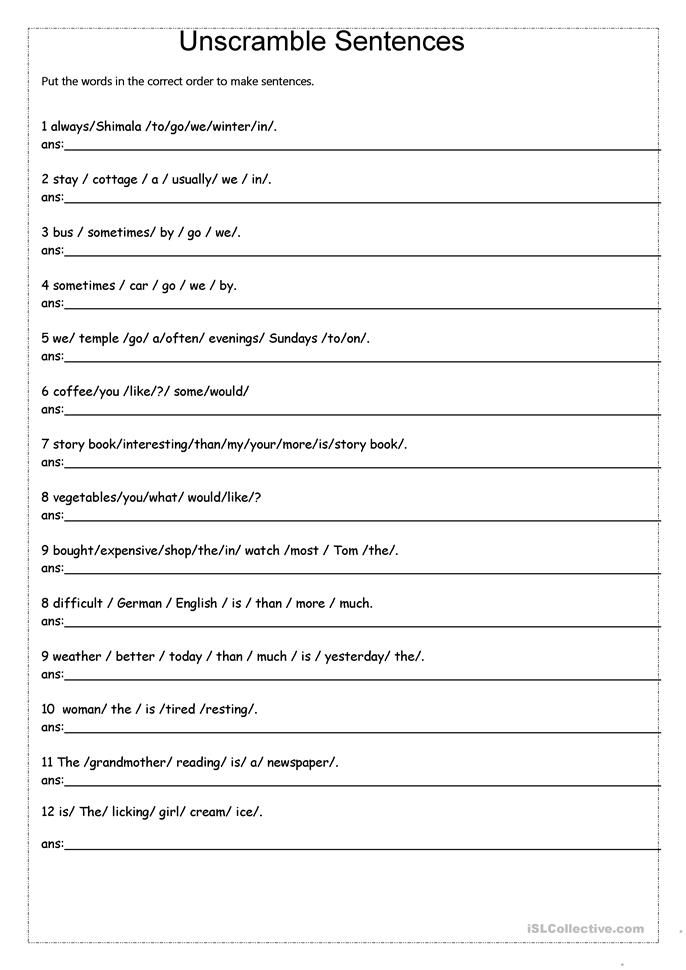
One of our favorite sentence games is Sentence Mix & Match.
What You’ll Need:
- Several index cards
- Markers to write with
What To Do:
- Write interesting subjects on half of the index cards (Ideally, these are things that your child likes. For example: dinosaurs, ice cream, different shapes, colors, etc.).
- On the other half, write predicates or sentence endings that make sense with your individual subjects.
- After writing, place the cards so that they make realistic sentences.
- Then, turn all the cards over and shuffle them. At this point, you want to ensure that you separate sentence beginnings and endings.
- After the shuffle, turn your cards over and discover what silly sentences you get.
- Remember to begin the subject cards with capital letters and sentence-endings cards with a period.
This is a fun activity to help children see that sentences are not always set in stone. They will also quickly learn that the meaning of a sentence can change when words get moved around.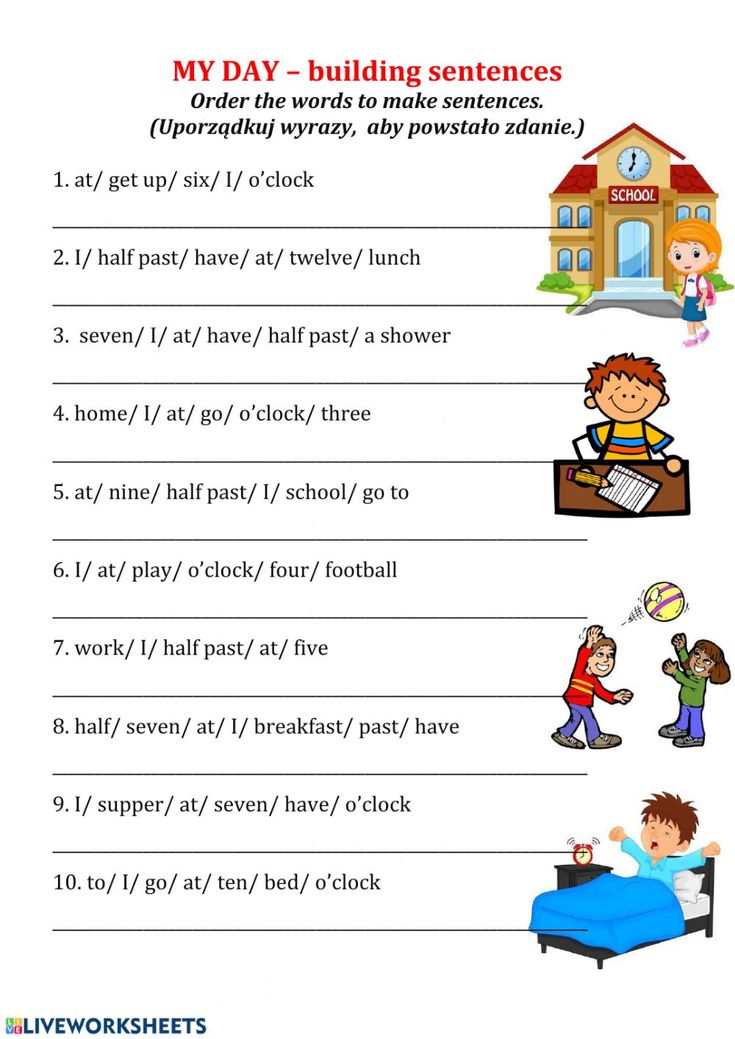
3) Play With Types Of Sentences
Sentence Mix & Match is not the only way to help children learn sentences for kids while also having fun. Another activity we’re huge fans of is playing with types of sentences. Specifically — statements, questions, and exclamations.
To get started, pick any simple sentence that your child will already be familiar with (e.g., “I like playing outside.”).
Next, encourage your child to say this same sentence as a statement, a question, and then an exclamation.
Similar to Sentence Mix & Match, this game helps children understand that minor tweaks can change the meaning of a sentence.
Children will come across punctuation marks during reading time, but they may not always understand the significance of each. This game will help your child learn how periods, question marks, and exclamation points affect a sentence.
5) Make A Switch
The subject and predicate for each simple sentence have a specific function.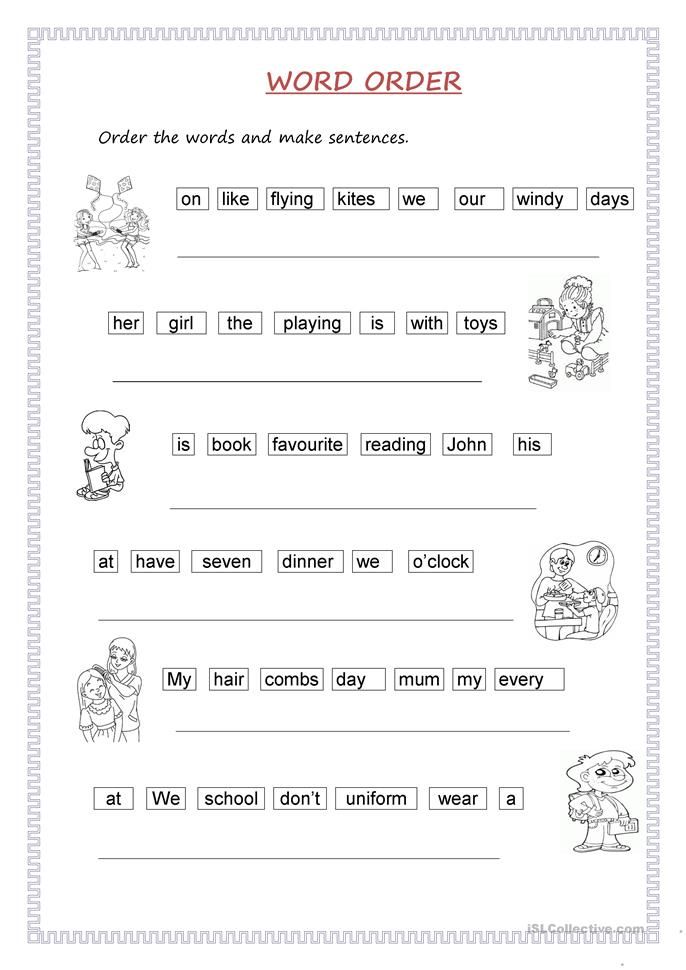 For children to use these correctly, they will need to understand what their roles are.
For children to use these correctly, they will need to understand what their roles are.
When kids start speaking as babies and then toddlers, they often repeat words, phrases, or the simple sentences they’ve heard from you, your partner, siblings, or other people around them.
At this stage, they haven’t fully grasped the functions of subjects and predicates. If we want to help our children develop their own sentences, we will need to help them understand the roles of these sentence parts.
A creative game they (and you!) will enjoy involves switching the subjects and predicates of a sentence.
Start with a simple three-word sentence, like, “A cat played.” Then take turns changing either the subject or the predicate of the sentence.
This may look something like this:
- A cat jumped
- A dog jumped
- A dog growled
- A gerbil growled
- A gerbil scampered
Once your young learner is confident switching three-word sentences, move on to four words, five words, and so forth.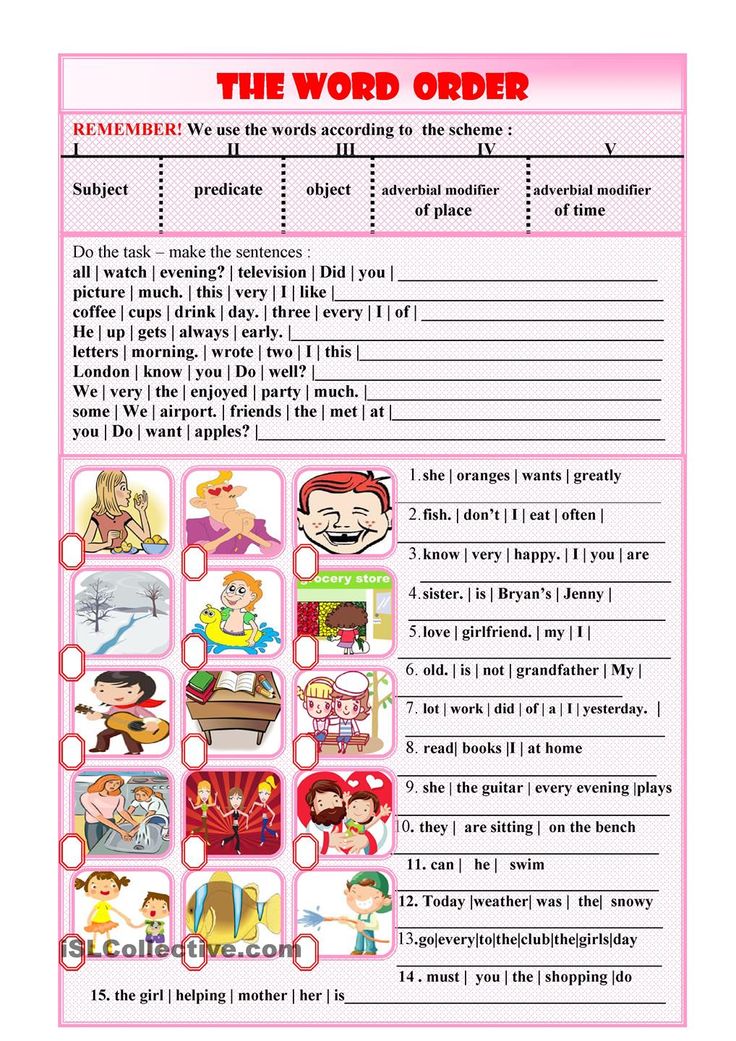
Through this fun activity, your child will start understanding the roles of predicates and subjects in sentences.
Simple Sentences For The Win!
A child’s language journey is pretty incredible. It often starts with lots of babbling and moves to single words. Soon, you get two-word combinations, and before you know it, you’re given a detailed account of what happened in class today.
As you’re doing the activities we’ve mentioned, remember to allow your child creative freedom. We know that language has a lot of rules, but that doesn’t mean it can’t be fun! Encourage your young learner to be as imaginative as they want to be.
For instance, if they write or say, “The lion growls at the dinosaur,” let’s celebrate the correct sentence construction and, for a moment, imagine a world where lions and dinosaurs exist in the same age!
For more fun and effective learning activities, check out the HOMER Learn & Grow app.
Author
Teaching Kids How to Write Super Sentences
How do you encourage your students to write longer, more interesting sentences? You know what will happen if you simply ask them to write longer sentences… they’ll just add more words to the end, resulting in long, rambling run-ons!
After struggling with this problem myself, I developed a method that helped my students learn how to turn boring sentences into super sentences.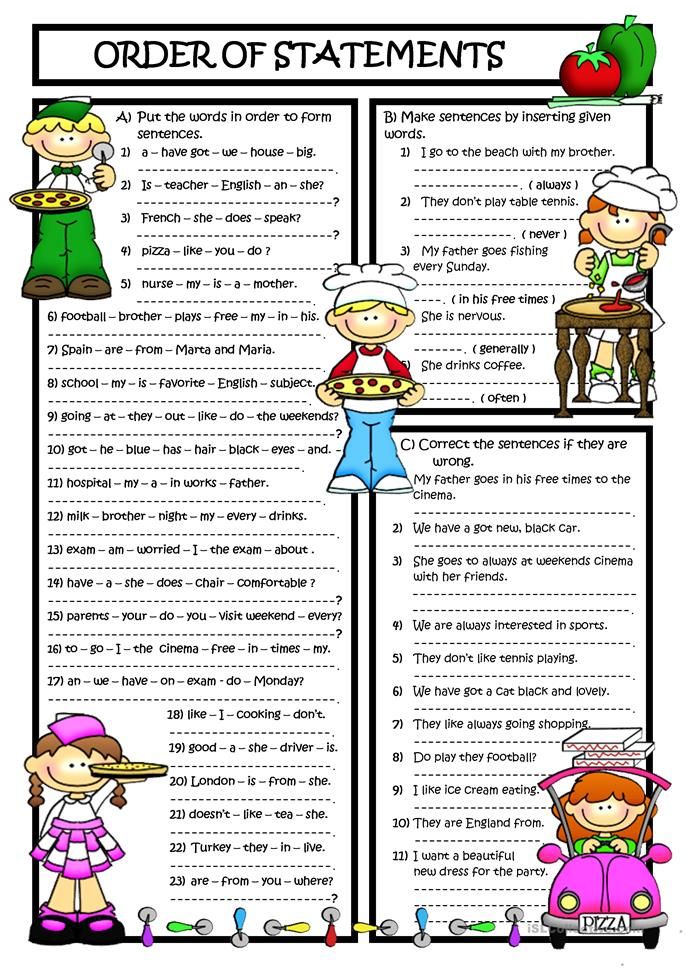 I began by teaching them the difference between fragments, run-ons, and complete sentences. Then we practiced revising and expanding basic sentences to make them more interesting. After I modeled the activity and they practiced it in a whole group setting, they played a game called Sentence Go Round in their cooperative learning teams. The difference in their writing was dramatic! Before long, they were adding more detail to their sentences without creating run-ons in the process.
I began by teaching them the difference between fragments, run-ons, and complete sentences. Then we practiced revising and expanding basic sentences to make them more interesting. After I modeled the activity and they practiced it in a whole group setting, they played a game called Sentence Go Round in their cooperative learning teams. The difference in their writing was dramatic! Before long, they were adding more detail to their sentences without creating run-ons in the process.
Step 1: Mini-Lesson on Sentences, Fragments, and Run-ons
Begin by explaining that complete sentences can be short or long, but they must have two basic parts, a subject and a predicate. The subject tells who or what the sentence is about, and the predicate is the action part of the sentence, or the part that tells what the subject is doing. If it’s missing one of those parts, it’s a fragment. If it has a whole string of sentences that run on and on without proper punctuation, it’s a run-on sentence.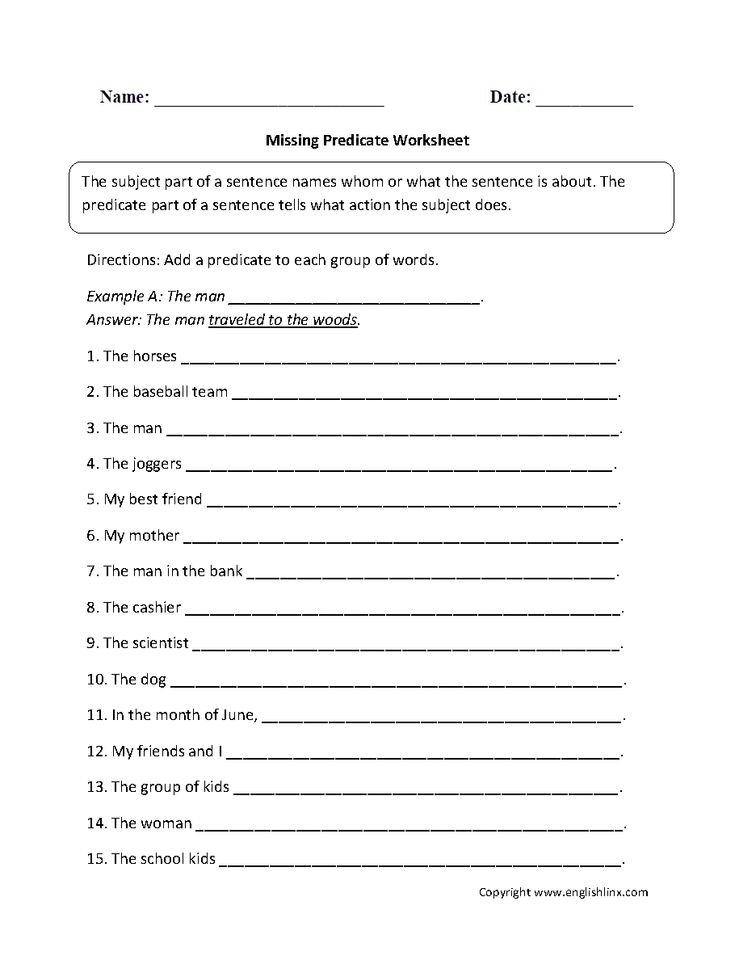
Next display a series of phrases or sentences and ask your students to decide if each on is a fragment, a complete sentence, or a run-on. Try these:
- Rabbits hop. (Your students will say it’s a fragment since it’s so short, but it’s actually a complete sentence.)
- The big brown fluffy rabbit in the garden. (Looks like a sentence, but it’s missing a predicate.)
- Rabbits love to eat carrots and one hopped into our garden and I thought it was cute even though it was eating the carrots. (A run-on of course … kids don’t usually have trouble spotting these, but you might want to have them find all the subjects and predicates to make your point.)
- The hungry rabbit hopped into the garden because he wanted to eat a carrot. (Even though this one is long, it’s not a run-on because it only had one subject and one predicate.)
Step 2: Mini-Lesson on Revising & Expanding Sentences
After your students can distinguish between fragments, run-ons, and complete sentences, it’s time for them to practice their sentence-writing skills by learning how to revise and expand basic sentences.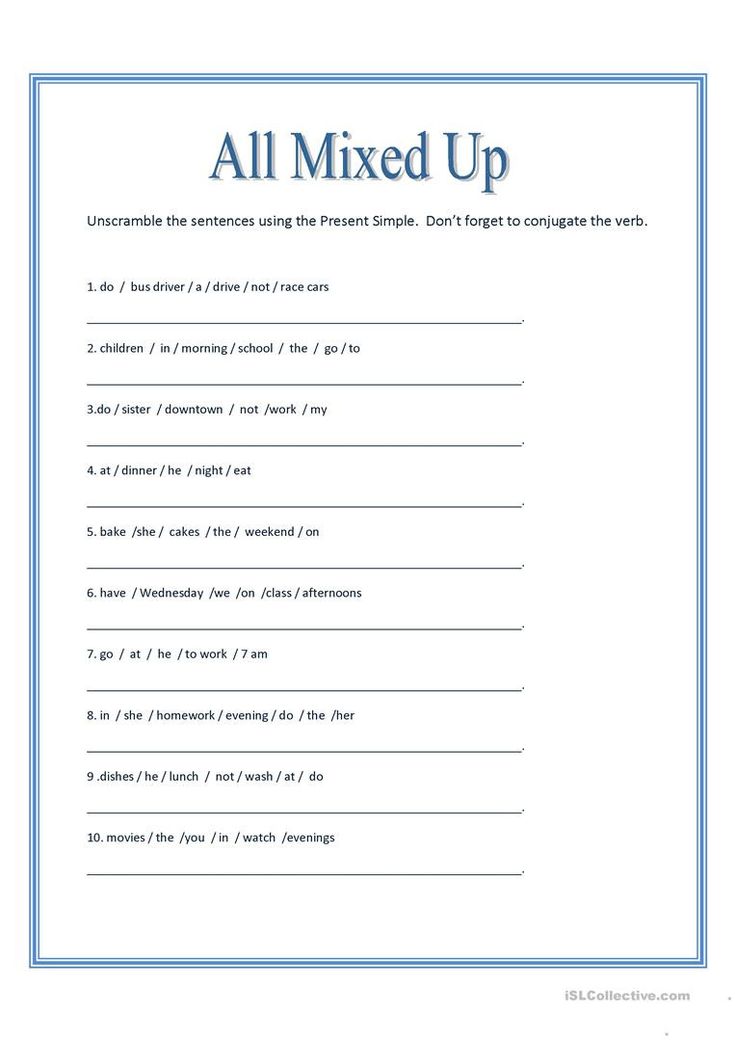 This activity should be modeled in a whole group or guided literacy group first, and older children can do the activity later in cooperative learning teams. To start the activity, you need a set of task cards with basic sentences that lack detail. I used an example from the Fall Sentences to Expand freebie for this lesson, but you can use task cards from any of the seasonal freebies below.
This activity should be modeled in a whole group or guided literacy group first, and older children can do the activity later in cooperative learning teams. To start the activity, you need a set of task cards with basic sentences that lack detail. I used an example from the Fall Sentences to Expand freebie for this lesson, but you can use task cards from any of the seasonal freebies below.
Whole Class Modeling:
- Start by selecting a basic sentence from the Fall, Winter, Spring, or Summer task cards above. Let’s use the fall-themed sentence, “She picked apples.” Write the sentence on the board or show it to the class using a document camera.
- Explain that “She picked apples” is boring, but if we ask ourselves questions about it, we can add details that answer the question and make it more interesting. For example, if we ask “Who picked apples?” we can name someone specific. Demonstrate how to make the change as shown below.
- It’s still a boring sentence, so let’s ask, “How many?” and say that Mary picked a dozen apples.
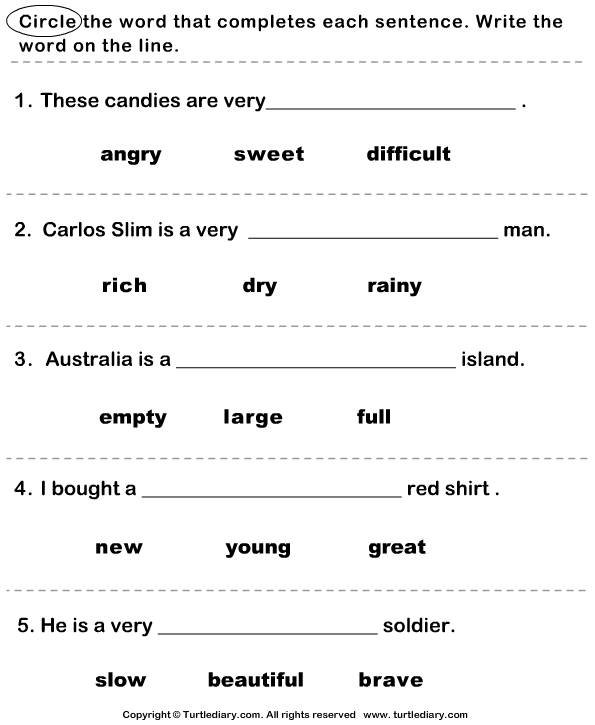
- Go through the same process, each time repeating the revised sentence and asking another question. After 4 rounds of changes, it might look like the one in step 4 below.
Whole Class Interactive Lesson:
- Next, repeat the process and actively involve your students. Ask one student to randomly select a sentence card and write it on the board.
- Then ask all students to think about a question they could ask and how they could revise the sentence to add one detail. It can be more than one word, but it shouldn’t be more than a short phrase that answers that question. If all students have individual dry erase boards or chalkboards, ask them to write down their revisions and show them to you.
- Call on one student to come forward and display his or her revised sentence.
- Repeat the process three or four more times until you’ve created a sentence that’s detailed and interesting, but not a run-on.
Modification Idea: If you notice that some students are creating run-on sentences, ask everyone to pair with a partner before sharing with the class to make sure all sentences are complete sentences.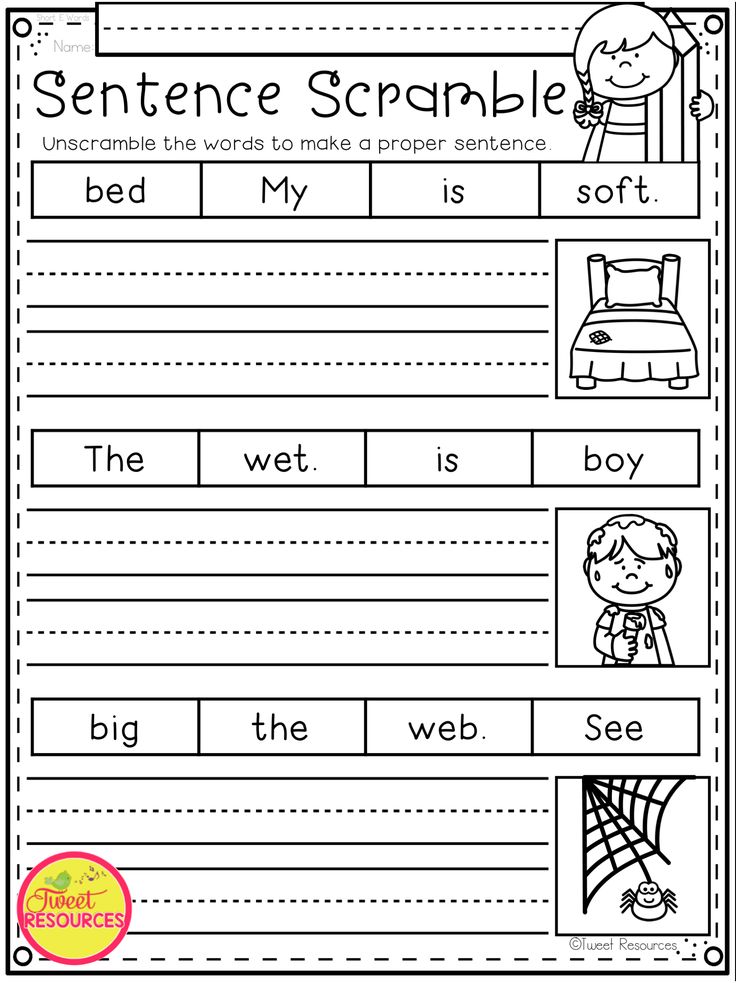
Step 3: Cooperative Learning Writing Activity
The first two steps are the perfect segue into Sentence Go Round, an activity for cooperative learning teams or small groups to practice expanding sentences. The product below includes sample sentences for the teacher to display, as well as printables for students and a sorting activity to practice identifying fragments, run-ons, and complete sentences. Sentence Go Round also includes activity directions and question cards to prompt students as they are creating their new sentences. To preview the entire resource, click over to see Sentence Go Round in my TpT store.
Step 4: Google Classroom Sentence Writing Practice
It’s important to follow up with independent practice, so I’ve created some Google Classroom resources to supplement the cooperative learning, hands-on activities in Sentence Go Round. Sensational Sentences: Sentence Writing Practice includes a Google slide presentation to introduce the concepts, 2 digital sentence sorting activities, 2 self-checking Google Quizzes, 2 sentence writing activities, and 3 editable templates.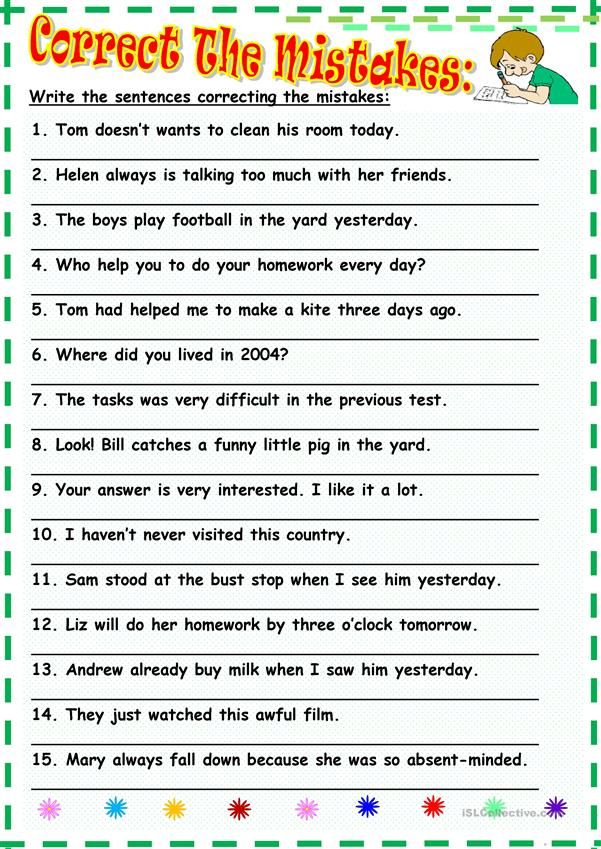
If you want to use the cooperative learning activity Sentence Go Round AND the Google Classrooms materials, check out my Sensational Sensational Sentences Bundle which includes both resources at a discounted price.
I hope your students enjoy these lessons and Sentence Go Round as much as mine did, and that they will soon be writing super sentences instead of boring ones!
Methods and techniques for working on a proposal
Osipova V.M.
In the preschool group, children must learn to analyze and synthesize sentences. This work contributes not only to the preparation for literacy, but also to the general speech and mental development of children. Without it, the student's idea of a word is indefinite, and the ability to analyze the verbal composition of a sentence develops very slowly.
Since preschoolers do not have knowledge of syntax, teaching the correct construction of sentences should be done practically. This is the culminating process of speech formation with its underdevelopment.
Each child of the speech group must master the ability to divide a sentence into words, name the number of words in it, any word in order, come up with a sentence for a given number of words, make a deformed sentence, write down the sentence graphically.
We advise you to start by isolating sentences from the story and counting their number. After listening to how many times the voice was lowered, the children will determine the number of sentences. Then the sentences need to be memorized, naming the first, second, etc. in order. At the same time, children lay out sticks or bend their fingers. Next, the speech therapist must bring in signal cards indicating the proposal.
In the next step, children learn that a sentence is made up of words. The basis of the proposed methodology is the variants of the game "Live Words". Each child depicts a “living word”, and all children must understand that a sentence consists of words.
It is recommended to use tasks that develop the ability to analyze and synthesize sentences.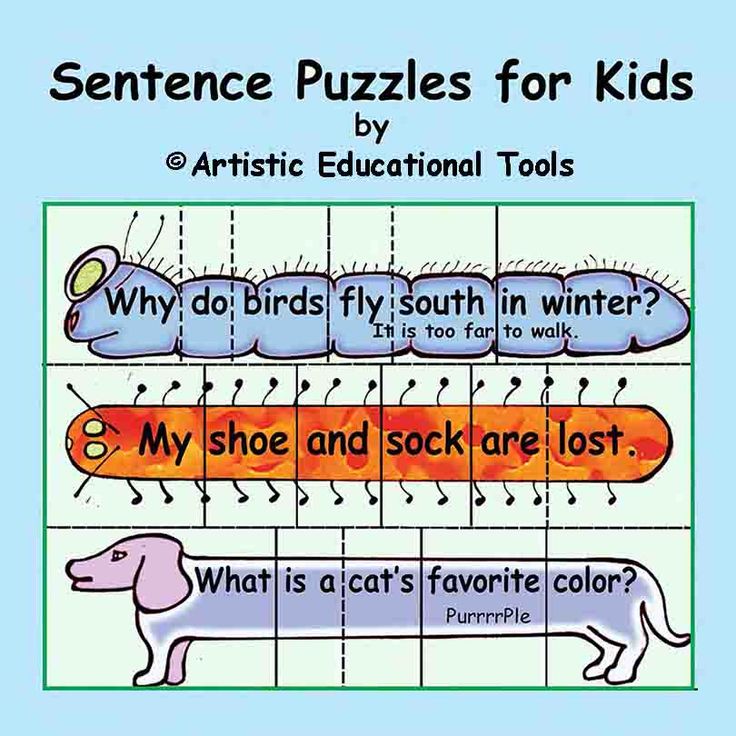
1. Make sentences of two or three words. Come up with a sentence about a house, about an object made of paper, iron, wood.
2. Repeat only the first two words in the given sentence. The autumn forest is beautiful.
3. Replace the last word with another. The girl is feeding the chickens.
4. Compose an offer according to the given scheme.
5. Compose a sentence with the given key words. Fluffy ... spinning.
6. Repair the deformed sentence.
7. Make a sentence with compound words. Ice drift, beekeeper, snowfall.
8. Compose a complex sentence with conjunctions and write it down graphically. The boy fell because he stumbled.
9. Independently construct a proposal for this beginning. Birds fly south when...
10. Combine simple sentences into one complex one. Wintering sparrows… Migratory starlings…
11. Unravel sentences-fables "Confusion". A red crocodile is flying. - A green crocodile is crawling.
12. Make a sentence from "living words".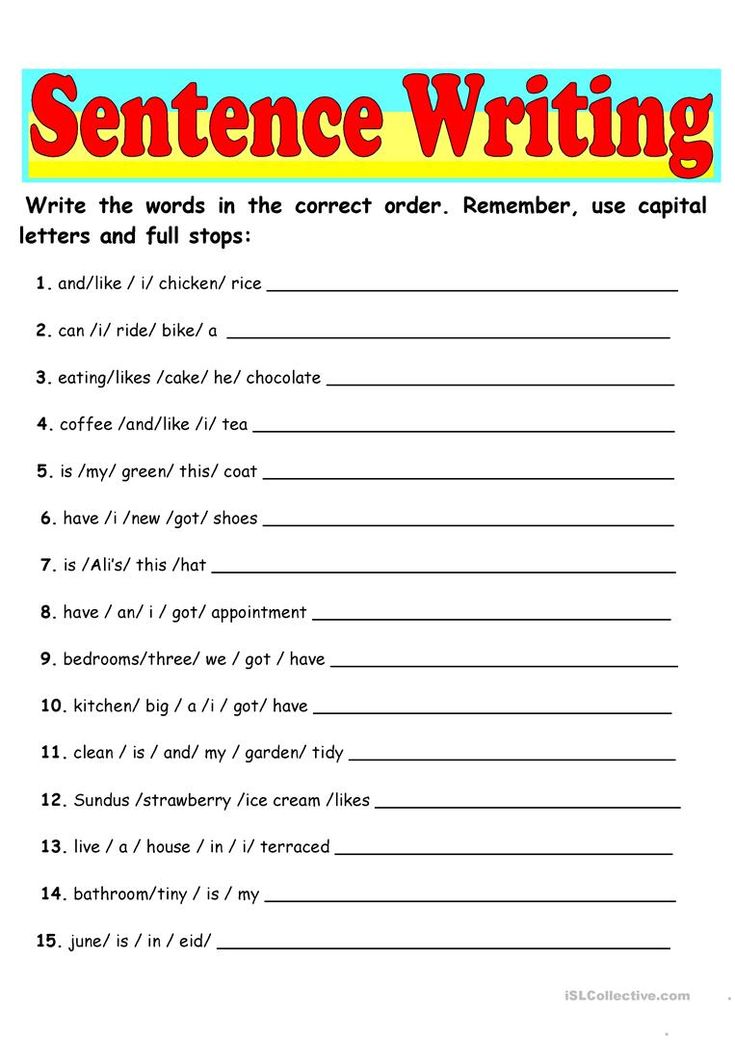
13. Make a proposal for an illustration or illustrative-graphic record.
14. Make a three-word sentence by adding your own words. Cat, boy, garden.
Annual plan for work
on proposal
September
3 weeks. Isolation of a sentence from speech: reading a story, fairy tales.
4 weeks. Learning a short story. Name the proposal in order.
October
1 week. Inventing a story from a picture, counting the number of sentences in it.
2 weeks. Naming the sentence in the story in order (sticks are superimposed on the sentence).
3 weeks. Work with a graphic image of the proposal on the cards.
4 weeks. Laying out card signs according to the number of sentences in the story.
November
1 week. Count sentences in a story. The counting is carried out "in the dark": the children put their heads on the table, close their eyes and raise the required number of fingers.
2 weeks. Dividing sentences into words, determining their number.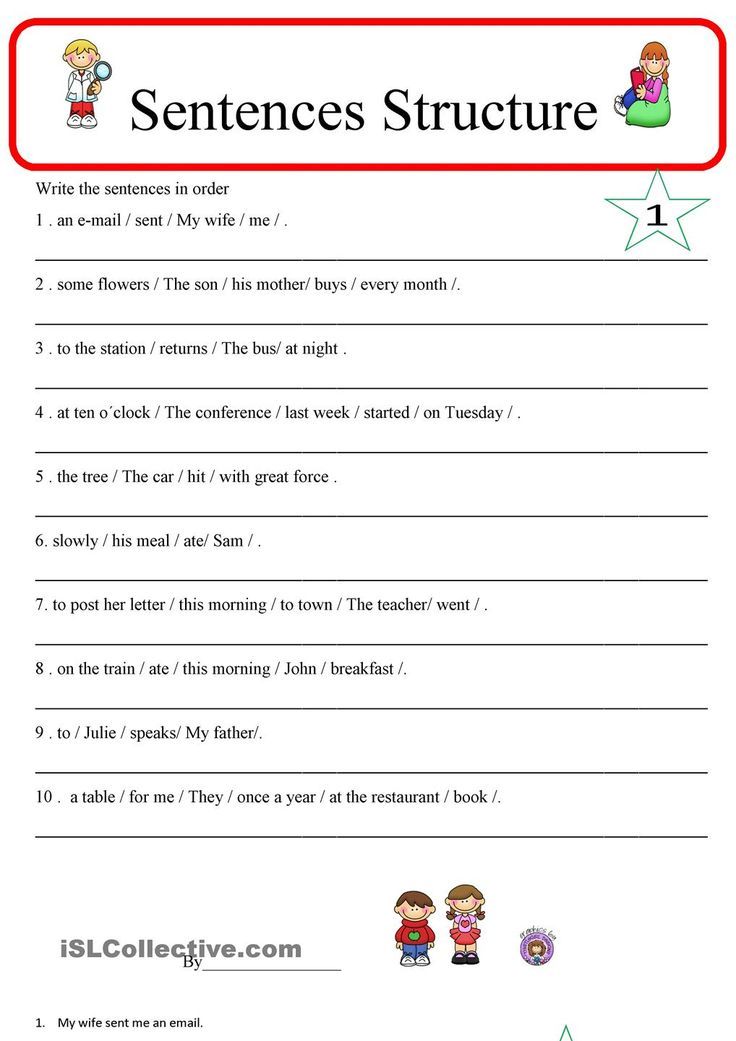
3 weeks. The game "Live words". Children count the words in a sentence, understand their sequence,
separate spelling.
4 weeks. Chorus game. Children must understand that all the words in a sentence are in their place and are not pronounced at the same time, but in order.
December
1 week. Acquaintance with the graphic image of the word.
2 weeks. Acquaintance with the graphic representation of the sentence, determining the ordinal place of the word in it. Work is carried out individually and with the whole class.
3 weeks. Games "Words are lost", "Words are lost".
4 weeks. Making proposals for demonstration and action. Differentiation of concepts word - sentence.
January
1 week. Making proposals on the topic "New Year".
2 weeks. Adding words to a sentence to make it longer. The game "Live words" is used.
3 weeks. Spreading the sentence with questions.
4 weeks. Spreading sentences with the Add Word game. Acquaintance with the preposition and its graphic representation.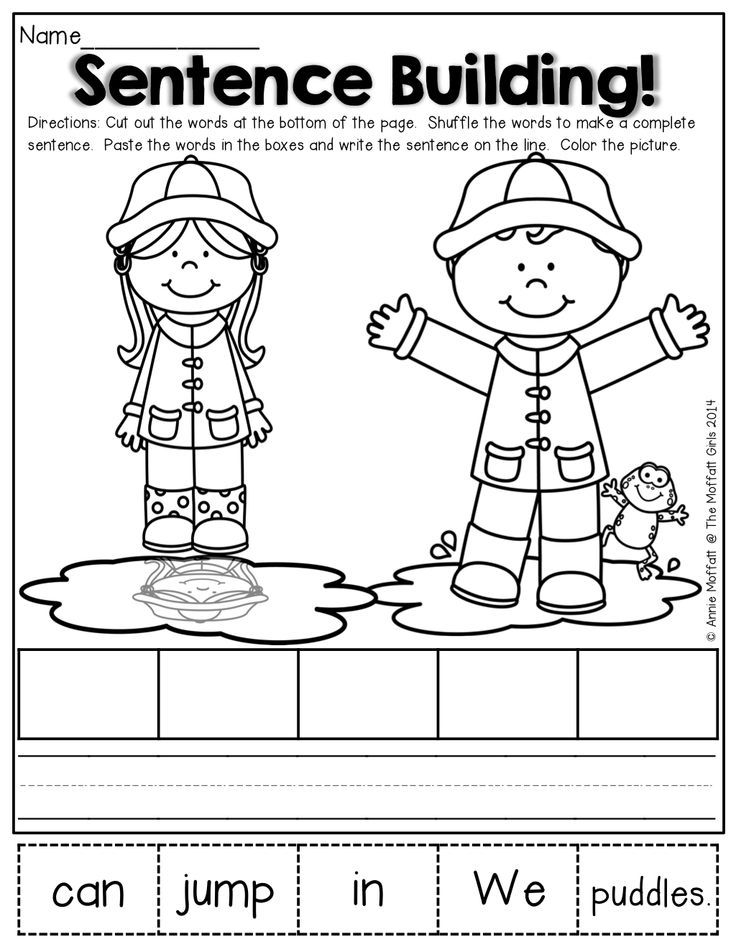
February
1 week. Correction of a deformed sentence with the help of the game "Which word got lost-
?".
2 weeks. Mastering the concept of the length of a sentence, compiling its graphic record.
3 weeks. Asking questions for each word in a sentence according to the model.
4 weeks. Coming up with proposals according to the graphic scheme.
March
1 week. Coming up with sentences of two or three words according to the picture "Spring".
2 weeks. Restoration of a deformed sentence. The game with Dunno is used.
3 weeks. Compilation of sentences with compound words (ice drift, snowfall). Their graphic record.
4 weeks. Compilation of complex sentences with conjunctions to, because.
April
1 week. Independent construction of proposals for this beginning.
2 weeks. Combining simple sentences into one complex one with the help of the union a: Sparrows are wintering birds, and swallows are migratory birds.
3 weeks. Drawing up proposals for illustrative and graphic records.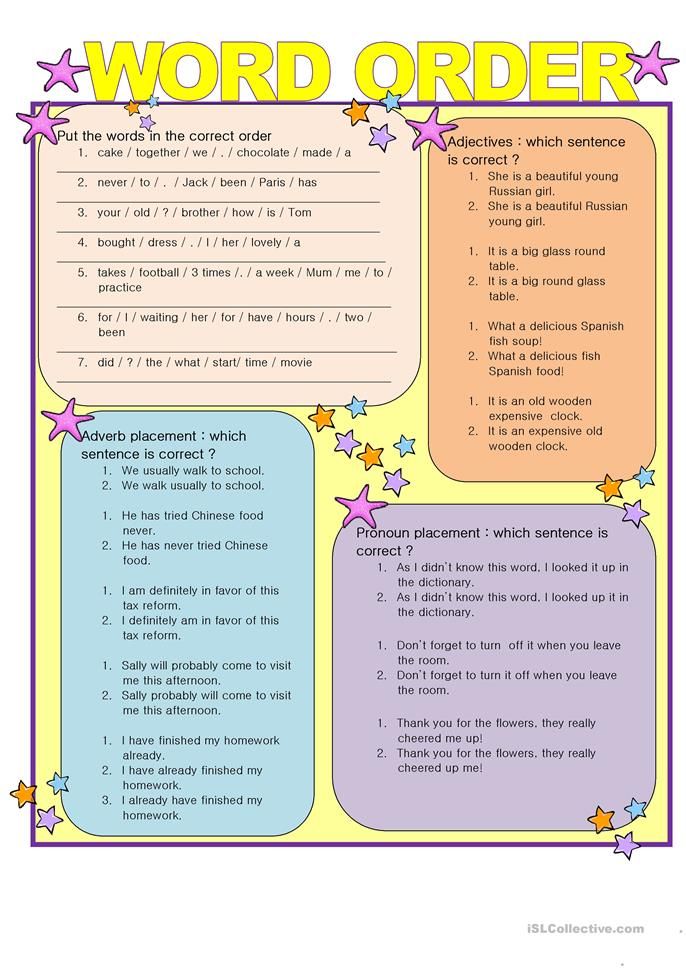
4 weeks. Unraveling sentences-fictions "Confusion". Independent inventing of fables.
May
1 week. Making proposals with a preposition. Various intonations are used.
2 weeks. Graphic recording of sentences with prepositions.
3 weeks. Games "Preposition in a sentence", "Who will ride what?".
4 weeks. Graphic dictation.
Sample lesson notes
Sentence extraction from speech
LESSON OBJECTIVES
- Mastering the concept of a sentence.
- Learning to count the number of sentences in a story.
- Memorizing sentences.
- Differentiation of vegetables and fruits.
EQUIPMENT
1. Toys: Parsley, dolls.
2. Chips.
3. Subject pictures.
4. Vegetables, fruits.
* * *
Organizational moment
Speech therapist. Today I came to the kindergarten early and brought Petrushka. Look, he has a story in the envelope. Let's read it.
Autumn has come. The fields were harvested.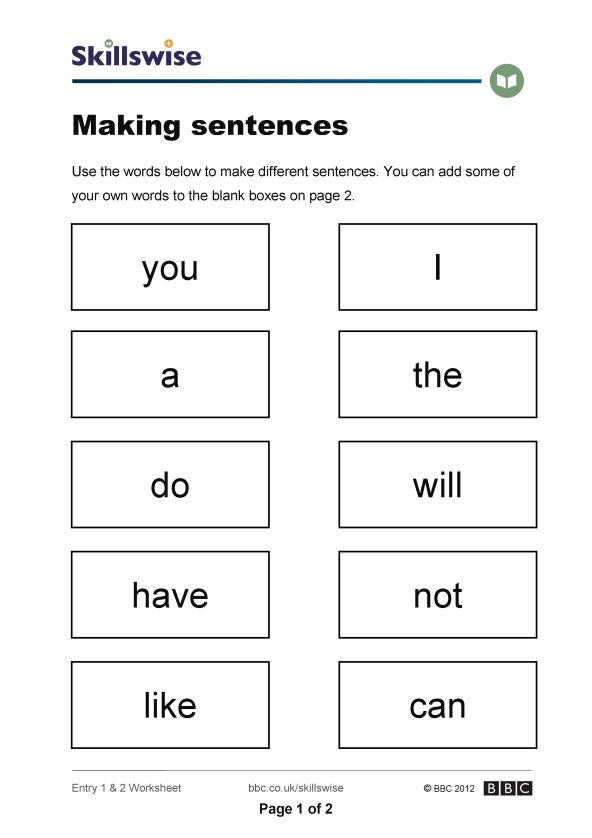 Birds fly south. The animals are getting ready for winter.
Birds fly south. The animals are getting ready for winter.
Children, come up with a title for this story. (Hangs up pictures on the board depicting the four seasons.) Choose a picture about autumn on the board.
Children are doing a task.
The concept of the proposal
Speech therapist. Guys, Petrushka was at school today and found out that any story, fairy tale, and just our speech consists of sentences.
Parsley. May I read the first sentence in the story? (Reads.) And now the second and third. (Reads.)
Speech therapist. Children, can you count how many sentences are in the story? Let's set aside chips for each sentence in the story.
The speech therapist reads the story again, the children set aside chips and count them.
The game "Smart tape recorder"
The tape recorder is represented by all the children of the group.
Speech therapist. Tell me guys, can you remember all the sentences in the story? Let's show Petrushka how we can do it.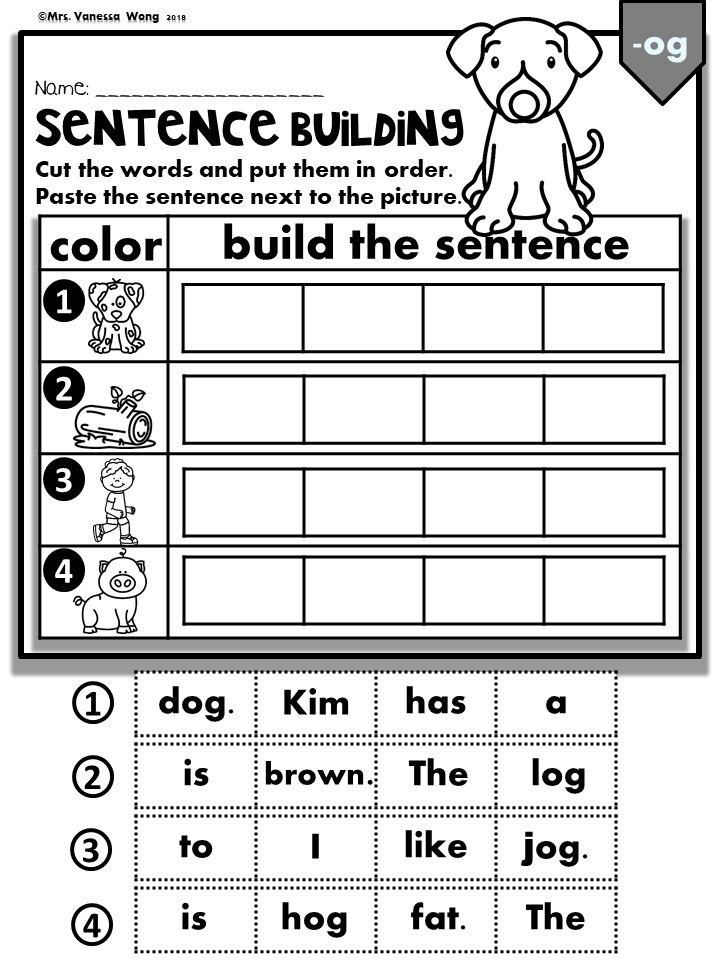 Let's play the game "Smart Tape Recorder". The first time you "write down" the first sentence, the second - the second, and so on. And then I’ll say, “Turn on the tape recorder,” and each row will repeat the recorded sentence in turn. And together you get a story about autumn. Here Petrushka will be surprised!
Let's play the game "Smart Tape Recorder". The first time you "write down" the first sentence, the second - the second, and so on. And then I’ll say, “Turn on the tape recorder,” and each row will repeat the recorded sentence in turn. And together you get a story about autumn. Here Petrushka will be surprised!
Children are doing the task.
Vegetable differentiation
and fruits
Dolls with bodywork enter. Put fruits and vegetables on the table.
Speech therapist. Guys, dolls went to the garden and garden. They gathered vegetables from the beds, and fruits from the trees. Help them put vegetables in one box for the Gardener doll, and fruit for the Fructoninka doll.
Children arrange vegetables and fruits in baskets and explain their choice.
Game "What did Grandma
buy at the market?"
Speech therapist. Now we will play the game "What did Grandma buy at the market?". Try to guess my riddles. It grows on a tree. It tastes sweet, round, red. What is this fruit?
Children.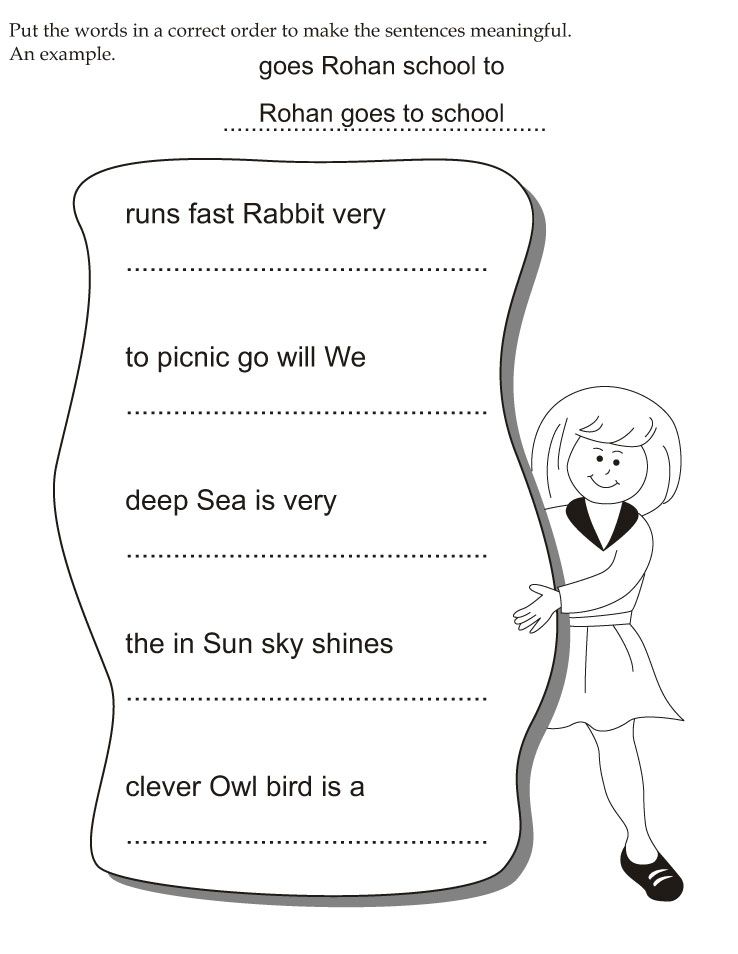 Apple.
Apple.
In the same way, riddles about all vegetables and fruits are guessed.
The result of the lesson
Speech therapist. Look, guys, while we were playing, Petrushka left and took the envelope away. What was in it?
Children. Story.
Speech therapist. And what does the story consist of?
Children. From suggestions.
Speech therapist. You are great, you learned and understood everything. And tomorrow, come up with a little story about vegetables at home too. Then in the kindergarten we will count how many proposals there are.
Getting to know the
graphic representation of sentence
LESSON OBJECTIVES
- Making up stories from pictures.
- Graphic representation of the offer.
- Memorizing sentences in order using pictograms.
EQUIPMENT
1. Sound letters.
2. Offer graphic cards.
3. Banks with "juice".
4. Pens, notebooks.
* * *
Organizational moment
Speech therapist.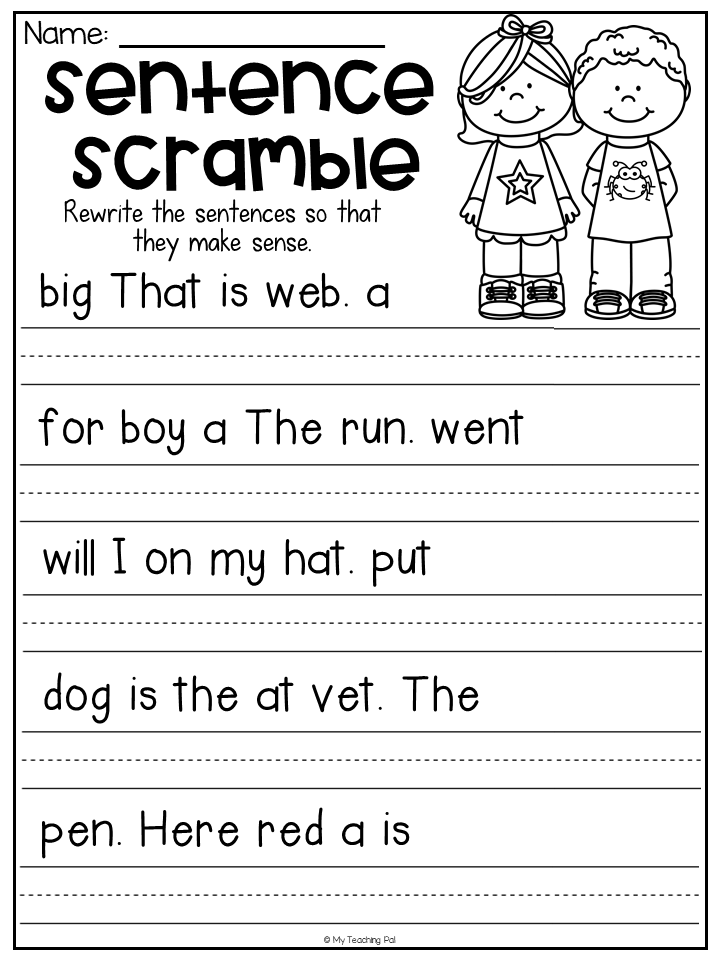 The guys, Pinocchio and Malvina sent us sound letters today. Let's first listen to Pinocchio's letter.
The guys, Pinocchio and Malvina sent us sound letters today. Let's first listen to Pinocchio's letter.
Pinocchio reads in a "wooden" voice, without intonational formalization of sentences, without pauses between them.
Good autumn in the garden. Ripe pears and apples just ask for your mouth. Quickly take the basket and collect fruit. Mom will be happy with the harvest.
Guys, did you understand what Pinocchio wrote?
Children. No.
Speech therapist. Now listen to how Malvin reads this letter.
Malvina's letter sounds.
Why did we understand well what Malvina was reading? That's right, she read expressively, separating one sentence from another. Can you count the sentences in this story? Who's to say how many there are?
Children. Four.
Graphic representation of the sentence
Speech therapist. Guys, I brought you cards today with an offer. (Gives out cards.) The corner is a capital letter at the beginning of a sentence, because the first word in a sentence is always capitalized, and at the end is a period.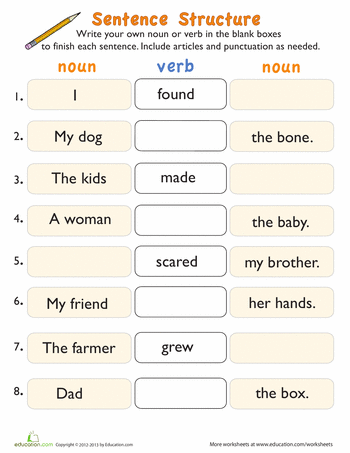
_______.
Now I will read the story of Pinocchio and Malvina again, and you will lay out your cards for each sentence. Then we count how many sentences are in the story.
Children are doing the task.
Drawings on the topic of sentences
Speech therapist. To better remember the story, we will make a small drawing for each sentence, which will then help you remember it and tell your mother in the evening.
Children make a small sketch of its content for each sentence.
And now let's remember the whole story. The first drawing is a garden, remember the sentence: It's good in the autumn in the garden. The second picture - apples, pears, the whole sentence: Ripe pears and apples just ask for your mouth. Etc.
Compilation of stories
by pictures
There are pictures on the table. Each child has their own.
Speech therapist. Children, make up stories from your pictures. Lay out as many diagram cards as you have sentences in your story. Each person completes the task independently.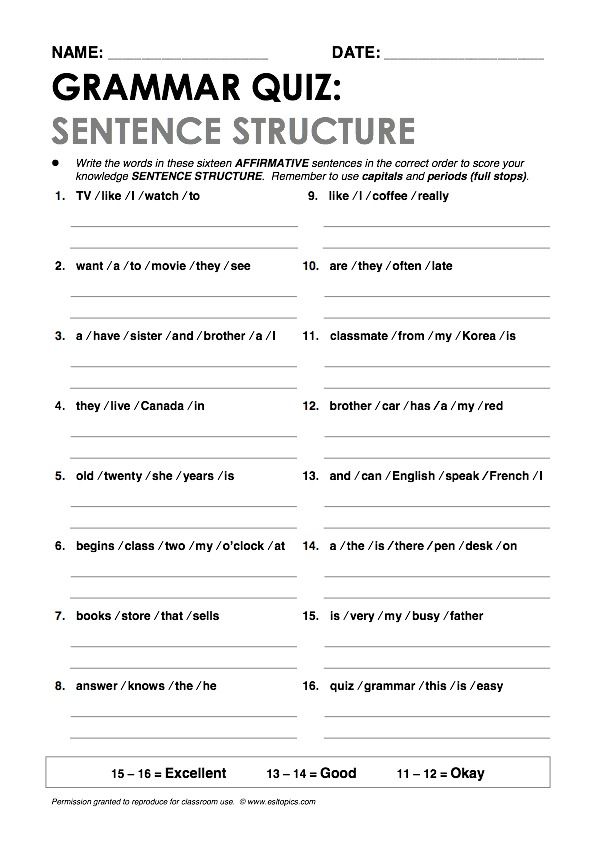
Next, the speech therapist checks all the stories with the children. One child writes sentences graphically on the board.
Game "Delicious juice"
There are jars with different "juices" on the table.
Speech therapist. Mom made delicious pear juice for the winter. How else can it be called? What juice?
Children. Pear.
Speech therapist. And which apple? From plums? Etc.
Children answer each question.
The result of the lesson
Speech therapist. What cards are on your table?
Children. These are proposal plans.
Speech therapist. How did you guess what this offer was?
Children. It starts with a capital letter and ends with a dot.
Acquaintance with the vocabulary
composition of the sentence
LESSON OBJECTIVES
- Consolidation of knowledge that a thought is expressed by a sentence, which consists of words.
- Introduction to a one- or two-word sentence.
- Determining the place of each word in a sentence.
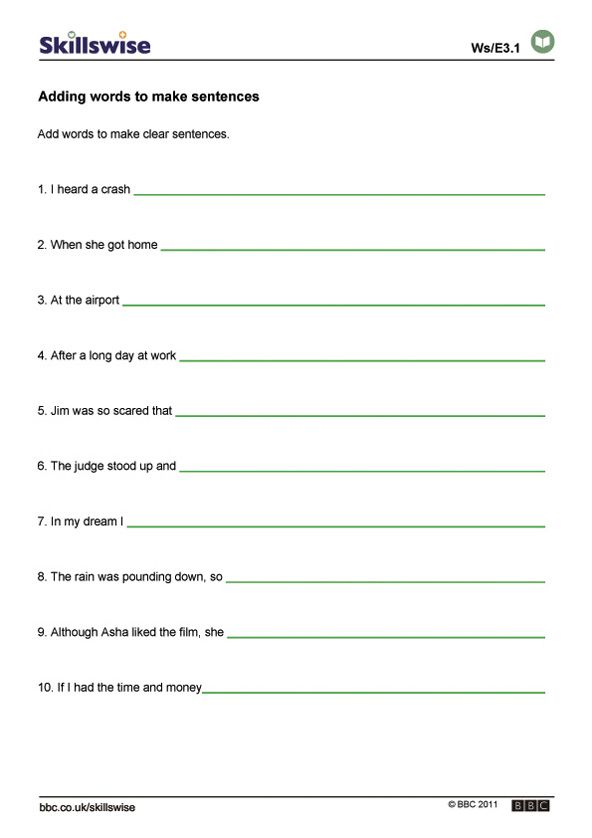
EQUIPMENT
1. Toys (airplane, paddle, matryoshka, rocket).
2. Cash registers with graphic representation of sentences and words.
3. Pens, notebooks.
* * *
Organizational moment
Speech therapist. Today we will get acquainted with the vocabulary of the sentence. (Shows a toy plane.) What word can you call this toy?
Children. Airplane.
Speech therapist. That's right, now tell me about the plane in two words.
Children. The plane is flying. The plane is buzzing. The plane is big.
Speech therapist. We've got an offer.
Compilation of short sentences
Speech therapist. Seryozha, tell me your proposal about the plane.
Serezha. The plane has landed.
Speech therapist. How many words are in it?
Serezha. Two words.
Speech therapist. Say the first word, then the second.
The child names the words.
I will now take a toy and make a suggestion about it. (Takes a spatula.) Spatula.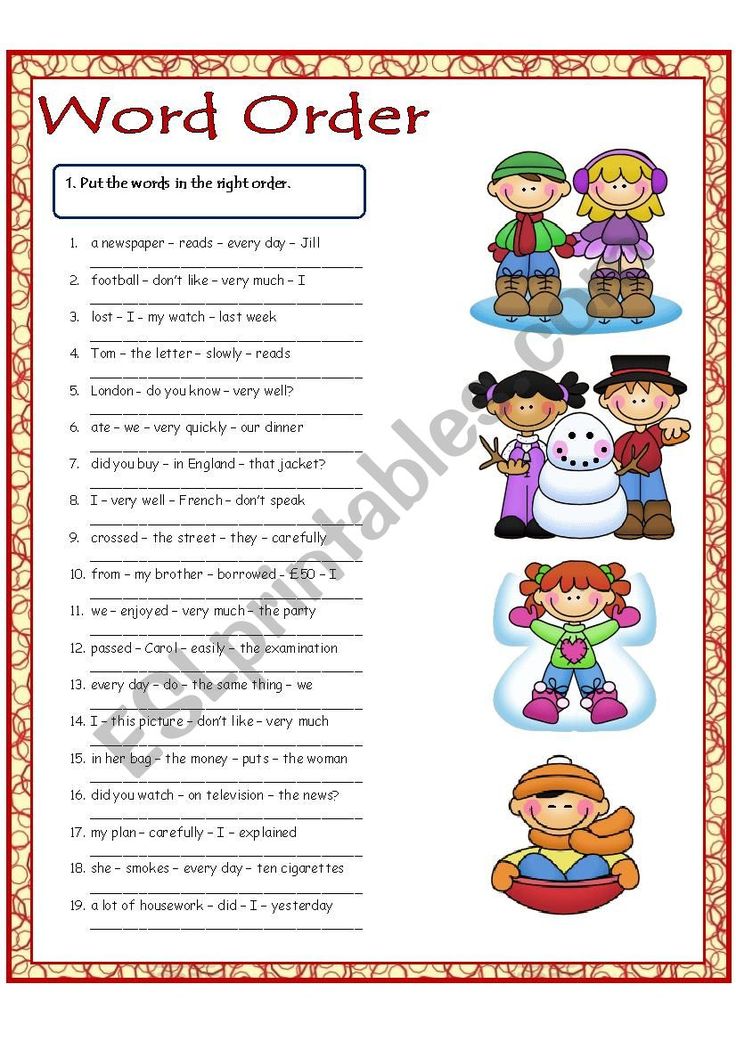 How many words are in my sentence?
How many words are in my sentence?
Children. One.
Speech therapist. Is it a long sentence or a short one? Does it have many words or few?
Children. Short, one word.
Speech therapist. Now I will show the toys, and you come up with sentences with their names.
Children come up with sentences about nesting dolls, a rocket, count the number of words, name the first, second words.
The game "Live Words"
Speech therapist. Guys, let's play the game "Live Words". You, Misha, will be the word rocket. And you, Dasha, the word flies. Name your words, first Misha, then Dasha. How many words are in this sentence? What is the first?
Children. There are two words in the sentence. The first word is rocket.
Speech therapist. And the second?
Children. Flies.
Graphic record
sentences
Speech therapist. You see, guys, in a sentence, the words are arranged one after another. I'm going to write this sentence down on the board in dashes.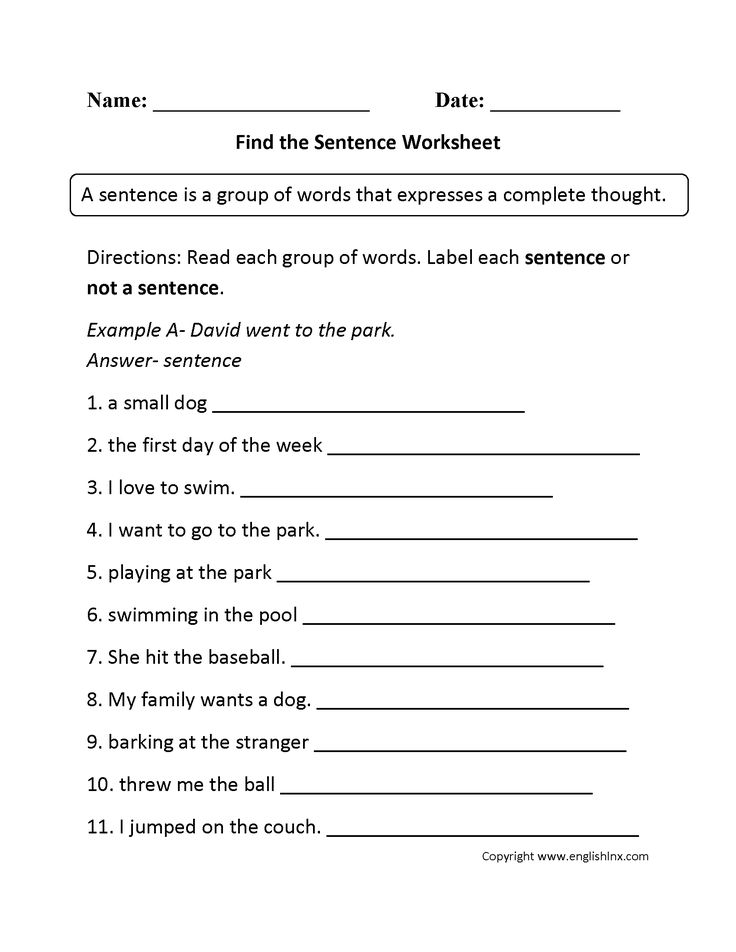 Each dash will mean a word, a corner is a capital letter, and a dot at the end. Write down the sentence Rocket flies in notebooks.
Each dash will mean a word, a corner is a capital letter, and a dot at the end. Write down the sentence Rocket flies in notebooks.
Children are doing the task.
You have the same cards at the box office. Find which card means the first word (with a corner) and which one means the last (with a dot). You must post a sentence Matryoshka stands.
Children are doing a task.
Sasha, draw as many lines on the blackboard as there are words in this sentence.
The child is doing a task.
Well done, Sasha, you wrote down the proposal. How many words are in it? What is the first word? What is the second?
Children answer questions.
The result of the lesson
Speech therapist. Guys, today you learned that a sentence consists of words, and the words are arranged one after another. Learned how to write down a sentence and make it from cards. All of you were great, everyone tried, and everything worked out for you!
Compilation of sentences
with given words
LESSON OBJECTIVES
Learning to compose various sentences for the task.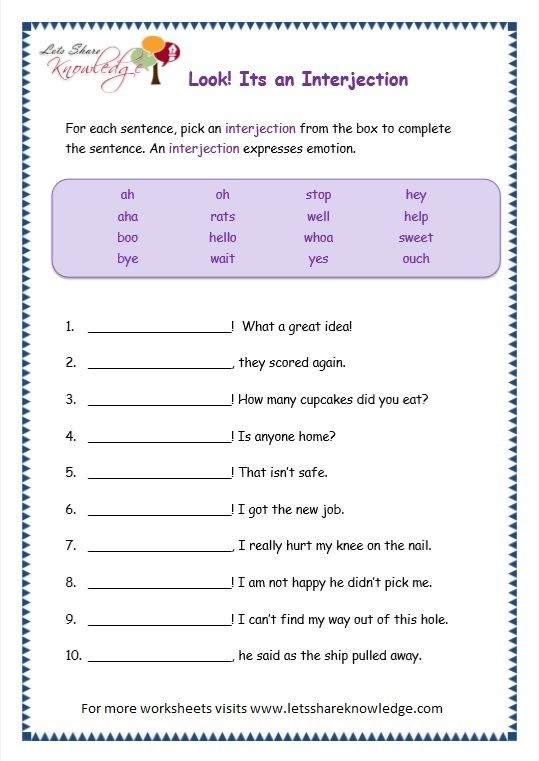
Consolidation of the ability to graphically record a sentence, make sentences with cards.
EQUIPMENT
1. Narrative pictures, toys.
2. Notebooks, pens.
3. Cash registers with signals.
* * *
Organizational moment
Speech therapist. Today we will come up with proposals. I came up with a suggestion about a cat. It starts with the word cat. Guys, can you guess my offer? (Hangs up pictures on the board.)
Children. The cat meows. The cat is drinking milk. The cat caught the mouse.
Speech therapist. Well done, guys, you came up with different proposals, but I had this: The cat is playing. Let's write it in notebooks and have someone write it on the blackboard.
Children write in notebooks. One child writes on the board with comments.
Child. The first word is cat, the second word is playing, there are two words in this sentence.
Main part
Speech therapist. Now guys, make up a sentence with the word boy. Sasha will not tell us his offer, but we will try to guess it.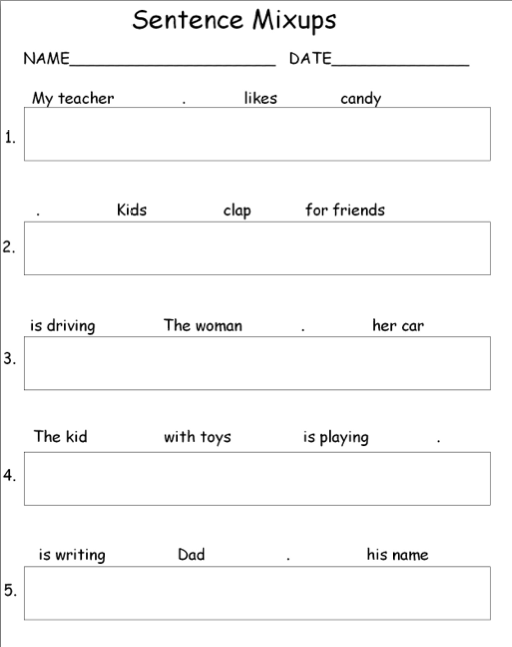
Children. The boy is playing. The boy bathes in the river. The boy is reading.
Speech therapist. Tell me, Sasha, did the children guess your offer? What did you come up with?
Sasha. Didn't guess. I came up with The boy teaches lessons.
Speech therapist. Here is a good sentence Sasha composed. Let's count how many words it contains. For each word, you need to get a card from the cash register and lay out a sentence.
Children (lay out a sentence from cards). There are three words in this sentence. The first word is a boy, the second is teaching, the third is lessons.
Speech therapist. You did everything right, guys, well done.
Now make up a sentence about chicken.
Children. The chicken pecks at the grain.
Speech therapist. Who is this proposal talking about?
Children. About the chicken.
Speech therapist. What is said about the chicken?
Children. That she pecks at the grain.
Speech therapist. You see, guys, in the sentence the subject is not only called, but something new, interesting is said about it.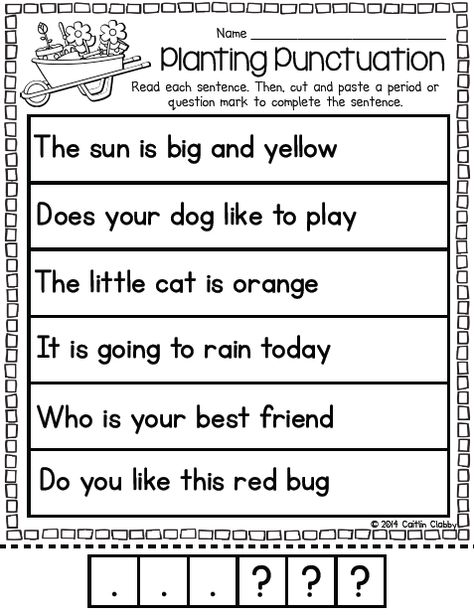 From this sentence, we learn that the chicken pecks at the grain. Listen again: grandmother, granddaughter, loves. Did I make an offer?
From this sentence, we learn that the chicken pecks at the grain. Listen again: grandmother, granddaughter, loves. Did I make an offer?
Children. No.
Speech therapist. That's right, this is not a sentence, but just individual words. To make a sentence, the words must be correctly arranged so that the words are friends. Masha, try to say a sentence about your grandmother.
Masha. Grandmother loves her granddaughter.
Speech therapist. Very well, we found out that the grandmother loves her granddaughter. And now Natasha will come up with a proposal about her granddaughter.
Natasha. Granddaughter loves her grandmother.
The result of the lesson
Speech therapist. So, guys, we have learned how to make sentences, write them down correctly, lay out cards. What did you like about the lesson, and whose suggestion did you remember? Come up with a suggestion for your favorite toy at home.
Children answer questions.
List of used and recommended literature
Gvozdev A.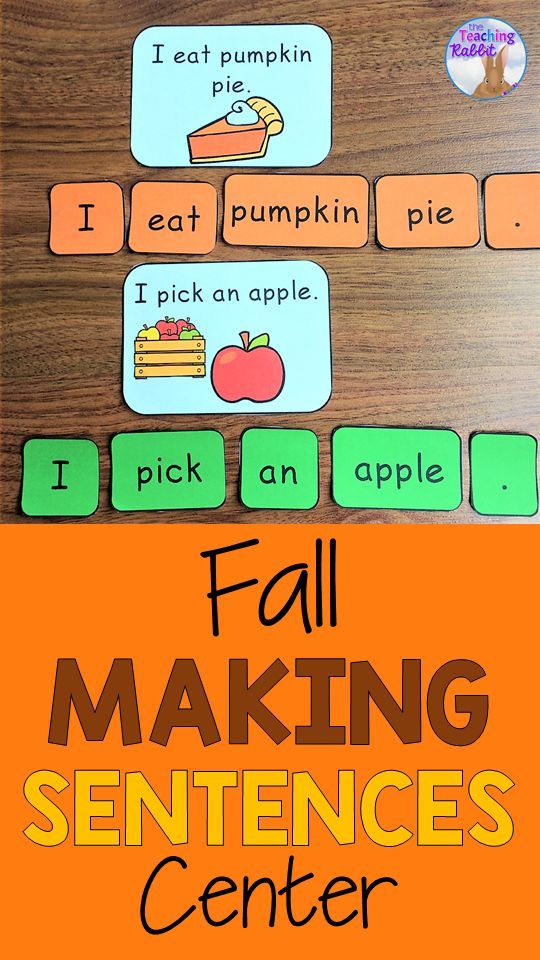 N. Formation of the grammatical structure of the Russian language in a child. M., 1949.
N. Formation of the grammatical structure of the Russian language in a child. M., 1949.
Efimenkova L.N. Correction of oral and written speech of primary school students. M., 1991.
Kashe G.A., Filicheva T.B. Program for teaching children with underdevelopment of the phonemic structure of speech. M., 1978.
Lopukhina I.S. 550 exercises for the development of speech. SPb., 2000.
Lvov M.R. Speech of younger schoolchildren and ways of its development. M., 1975.
Seliverstov V.I. Games in speech therapy work with children. M., 1987.
Familiarization of children with the concept of OFFER
Similar presentations:
Familiarization of children with the concept of "word"
Preparing children in kindergarten for literacy
Lexical and grammar games for children
Methods and techniques for correcting errors in children's speech (phrases, sentences)
Methodology for the formation of the grammatical structure of speech
Picture material for the speech map.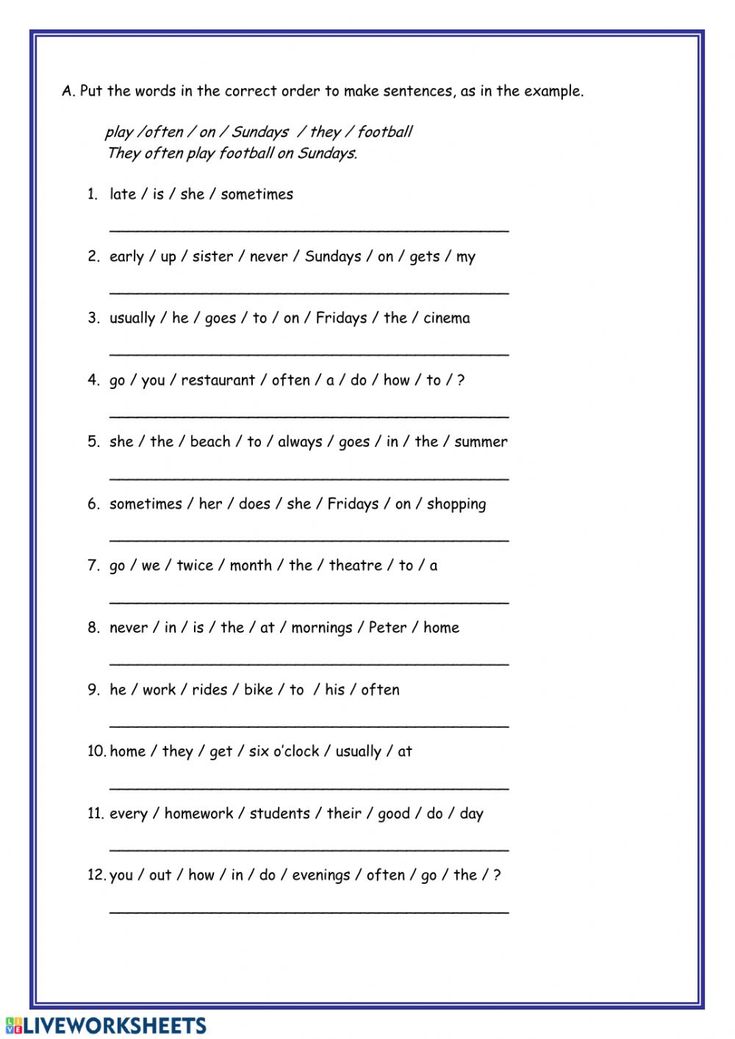 Study of speech comprehension. (5 years)
Study of speech comprehension. (5 years)
The system of games and exercises for the prevention of violations of written speech in children in the conditions of preschool educational institution
Methods of studying morphology in the course of the Russian language in elementary school
Advice for educators. Acquaintance with the sound structure of the word
Fathers and Sons. Final essay 2018-2019
1. Introducing children to the concept of PROPOSITION
All proposals were made by children of the older group2. Content
Familiarization with the sentenceFamiliarization with the verbal composition
of the sentence
Familiarization with the scheme of the sentence
Speech game "Live words"
Literature
?
?
?
What skills do children acquire
in the process of familiarization
with
? offer? ?
4. Familiarization with the sentence
•Separation of the sentence from the speech.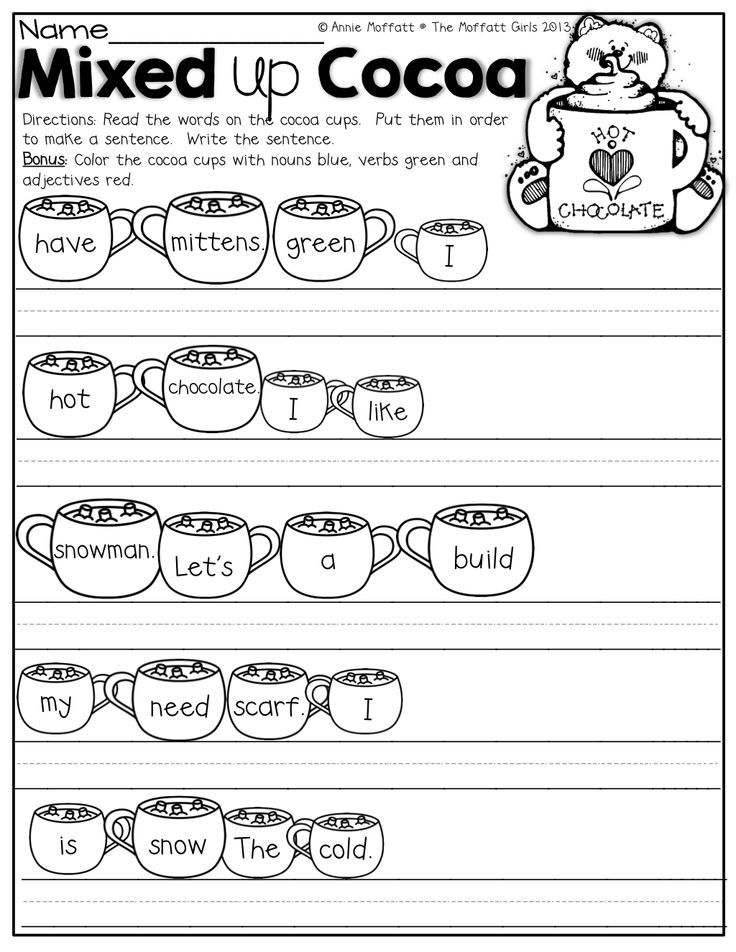
•Determination of the semantic side of the sentence.
•Composing sentences from two, three words,
four words.
Drawing up a story based on a picture
The teacher offers to listen to a short story based on a picture
(of 3-4 sentences), highlighting each sentence
intonation.
Questions are asked for each proposal.
Children are invited to listen to the story again, after
each sentence, lay out a chip.
How many sentences are in the story?
Output. Our speech consists of sentences, we
speak in sentences; each sentence
says something.
Harvest
In the spring Sasha, Kolya and Natasha
sowed carrot seeds.
All summer long children watered
plantings from watering cans.
In the autumn they collected
a large basket of carrots.
Children are happy with the harvest.
Questions:
•What did Sasha, Kolya and Natasha
sow in the spring?
•How did the children take care of
plantings in the summer?
•How many carrots
did they pick in autumn?
• Are the children happy with the harvest?
Awareness of the semantic aspect of
sentences
The boy draws.
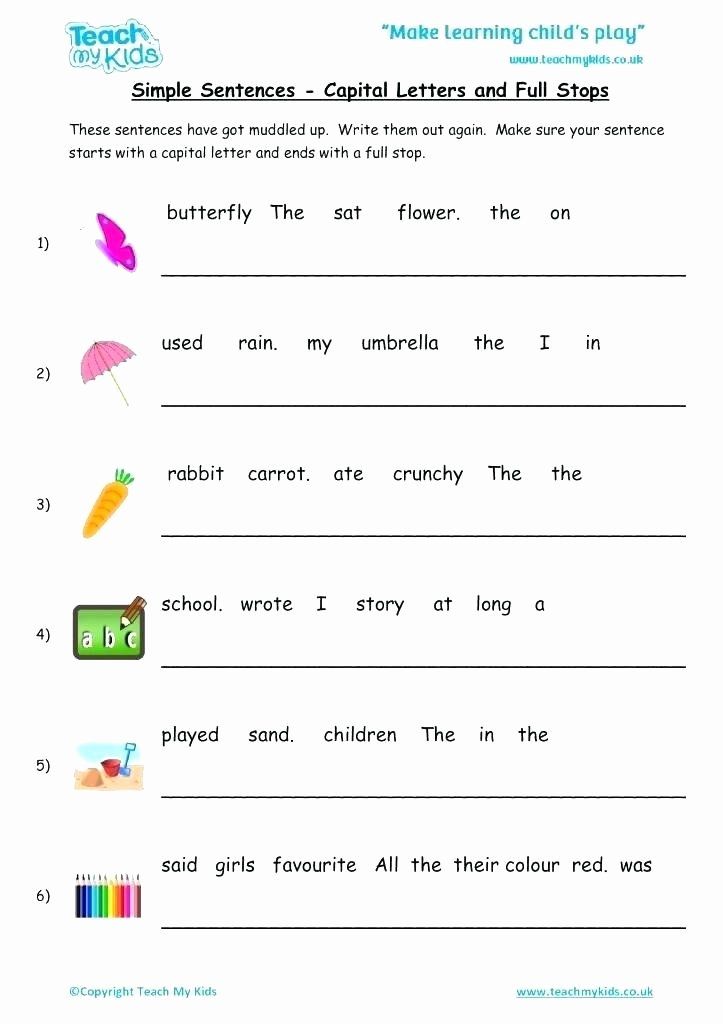
I made an offer.
Who is the sentence talking about?
The sentence refers to a boy.
What does sentence
say about the boy?
The sentence says that
the boy is drawing.
Making proposals for toys
The ball jumps merrily.
Bear likes to ride in a car.
The car is moving fast.
Bunny smiles.
Ask comprehension questions
for each sentence.
Making up sentences for
given word
I came up with a sentence with the word kitten
Guess my offer.
Make up a sentence with the word apple
Make up a sentence with the word girl
Making sentences for action
A kitten is playing with a ball.
Children dance merrily.
12. Familiarization with the verbal composition of the sentence
• Identification of words in a sentence.• Compilation of sentences from words.
• Naming of words in a sentence consecutively
and randomly.
Number of words in the sentence
Car is carrying cargo.
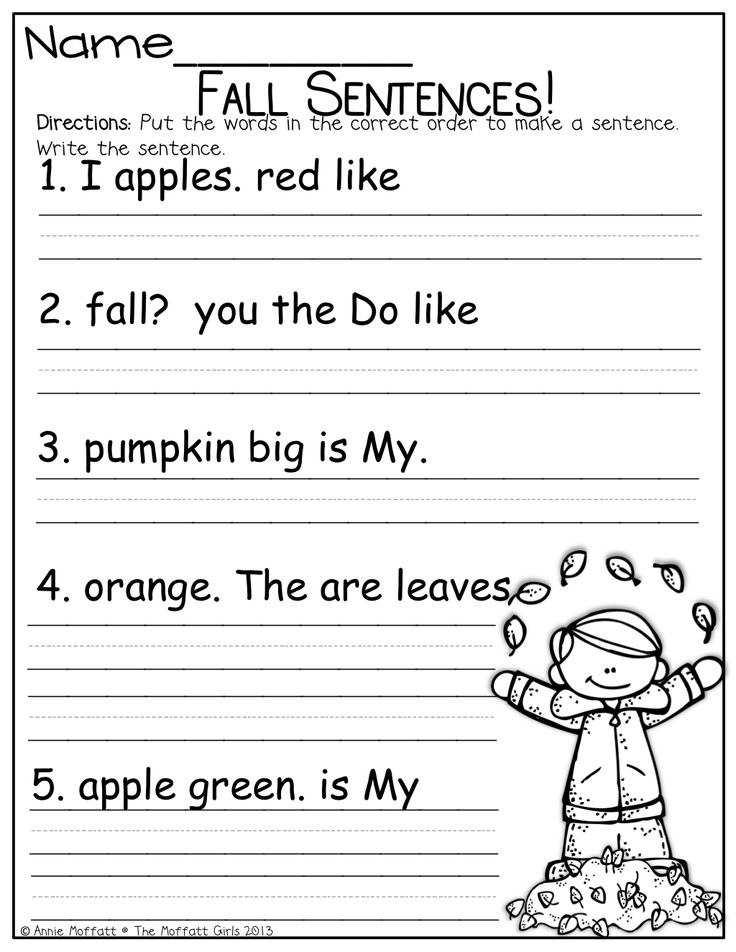
• How many words are there in a sentence?
•Name the first word…
car
•Name the second word…
lucky
•Name the third word…
load
Think of
Think of a sentence
sentence about
so,
to
words.
hedgehog was
hedgehog
out of five
first.
second.
last.
The hedgehog is looking for mushrooms.
A cheerful hedgehog walks in the forest.
A hedgehog runs between the trees.
We saw a hedgehog in the forest.
Make a sentence with 9 words0007 rain
under
wet
puppy
puppy got wet in the rain.
Compose a three-word sentence
from the pictures
Two-word sentence
Four-word sentence
Write a four-word sentence
with the short word
on.
The boy is skiing.
A puppy sits on a hill.
18. Familiarization with the scheme of the sentence
• Drawing up by one child of the scheme of the sentence,said by the teacher.
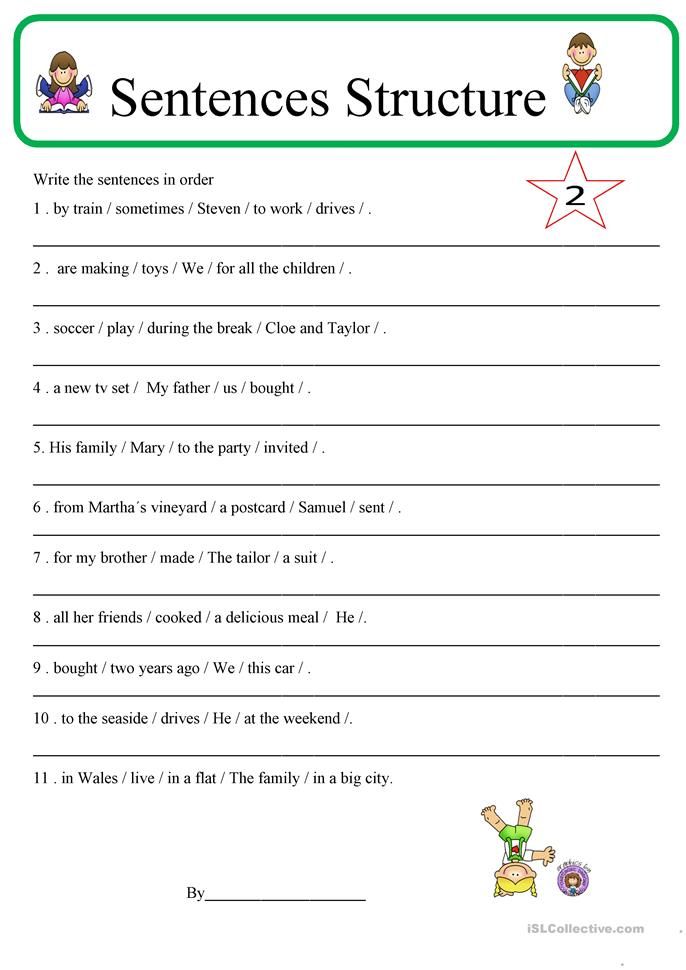
• Drawing up a proposal scheme for all children.
• One child says a sentence, the other
(or all children) draws up a diagram.
• The teacher draws a diagram on the blackboard, children
make various proposals on it.
Scheme of a sentence
A bear is holding a ball.
The first word is indicated by a corner. Corner
indicates that the first word in sentence
is capitalized.
Words are indicated by lines.
There is a distance between the lines, it means
a pause between words.
A period is placed at the end of the sentence.
Make a sentence according to the scheme with
the word children.
Children
love to play
Children
went
to
Children
go to school
Sokhin and
G.P. Belyakova. The words in this living model are depicted by children. In the
game process, the teacher calls as many children as
words in a sentence, and tells everyone what word he will
be.
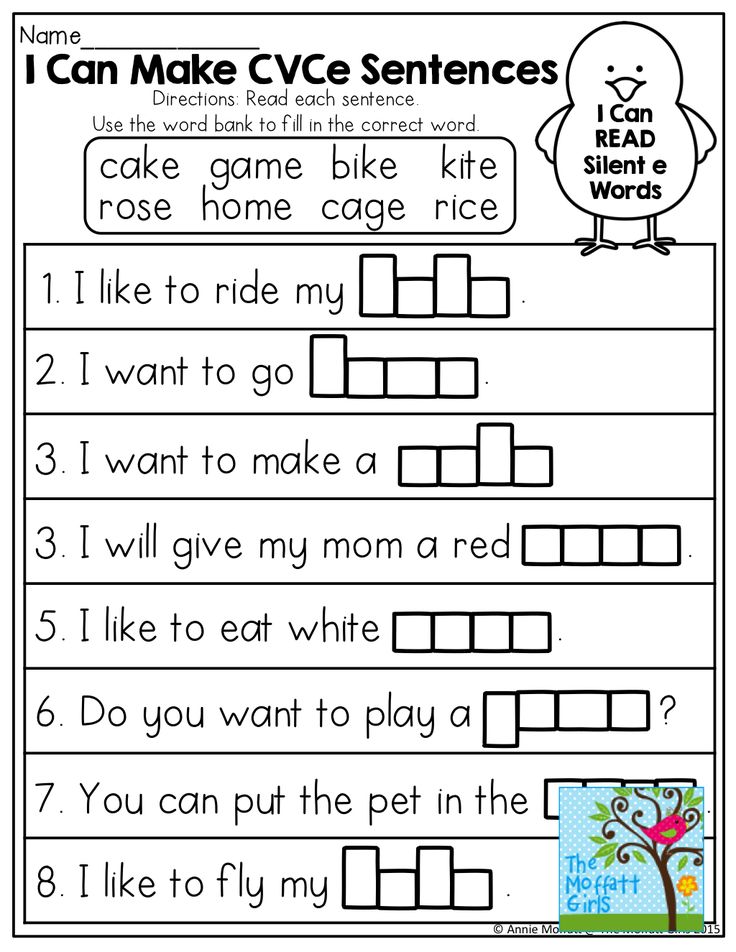 0007 composition of the proposal. When naming the words in order, children
0007 composition of the proposal. When naming the words in order, children can "read" the sentence
intended or spoken. Thus, in this "living" model, speech
reality stands out as an object of observation,
study.
The teacher calls three children (“living words”) who will
speak the words of sentences, puts them in order.
The teacher addresses the children: "Listen to what the children will say"
Tanya will have the word
workers
Katya will have the word
Sasha will have a word
building
Workers
Who did they talk about?
building
house
house
.
What did they say about the workers?
Now listen to what these children have to say.
The teacher says words to the children in the ear.
At the sign of the teacher, they pronounce the words of the sentence, but not
sequentially, but all together, at the same time.
Tanya will be the word
Katya will be the word
Marina was looking for
Sasha will be the word
raspberries.
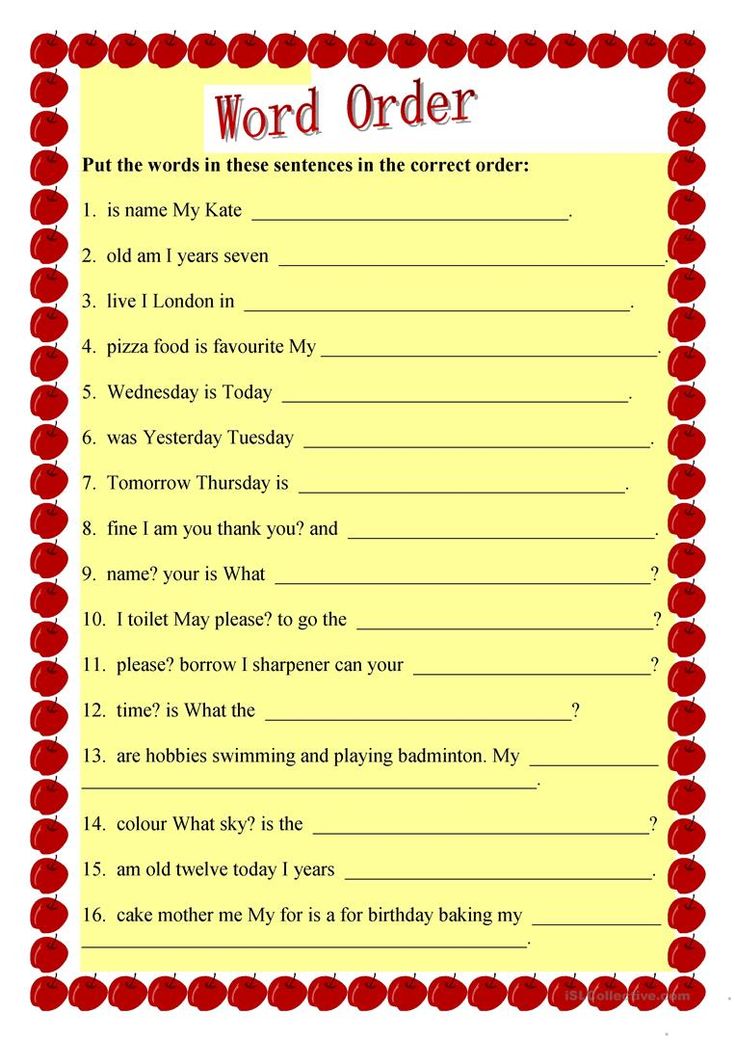
Words in a speech are pronounced sequentially, one after the other.
"Learn the word"
Teach children to spread the sentence,
adding one word: come up with the missing word
, guess the intended word.
Listen to what I say: "Valya is painting a house." I said three word sentence
. First I said the word Valya, then draws, then the house.
Three children will come to me
Ira will be
word
Kolya will be
word
Tolya will be
word
What sentence
turned out?
Valya
Valya
draws
house
draws house
.
“Know the word”
Three children will come up to me
And what word will Katya be, you have to come up with
yourself
Ira will be the word
Boy
Boy
Kolya will be the word
took
took the ball
.
"Guess what word got lost?"
We need to help the "living words" find their place in the
sentence, and then we will find out what these words say about the
cat.

Anya word
Katya word
Tanya word
cat
door
about
Tolya the word
lies
Each child who proposes a permutation variant takes the named word
and puts it in the place that he named, and the children
say what happened.
The permutation of words is repeated until
a correct, meaningful sentence is obtained.
Children "read" the sentence
cat
cat
lies near
lies
doors.
around
doors
“Confusion”
“Listen to K.I. Chukovsky
"Confusion" and tell me why it is called that.
Fish are walking in the field, toads are flying in the sky.
Mice caught a cat, put it in a mousetrap.
"Confusion"
A spiny crocodile is flying.
Katya word
Tolya word
Ira word
What words need to be replaced by
to make
the correct sentence
?
green flies
spiny crocodile
swims
This game allows children to practice
in replacing words, making sentences that are correct in meaning
.
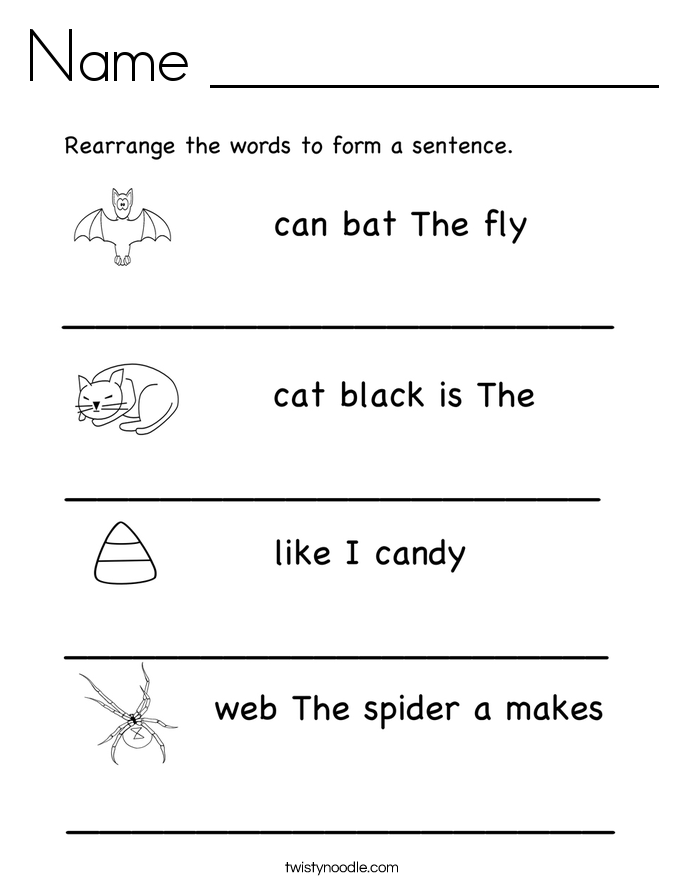
A green crocodile swims.
A white dove is flying.
A spiny hedgehog is running.
“Make a sentence”
Tanya word
Kolya word
Katya word
Tolya word
Ira word
cat
red
Anya word
red
fox
lies
fox runs or cat?
Red cat is running.
cat
red
running
red fox lying down.
fox
redhead
lies
Conclusion
Children acquire the ability to divide sentences and
compose them from words, get acquainted with speech as
linguistic reality.
Usually hidden, basic properties of speech appear in visual form before children who cannot read
: linearity - the temporal sequence of words
included in a sentence, and discreteness - separateness of the words
that make up a sentence.
There are prerequisites for the formation of reading skills in children in the future.
36. Literature
AlekseevaM.M., Yashina V.I. Methods for the development of speech and
teaching the native language of preschoolers-M .


